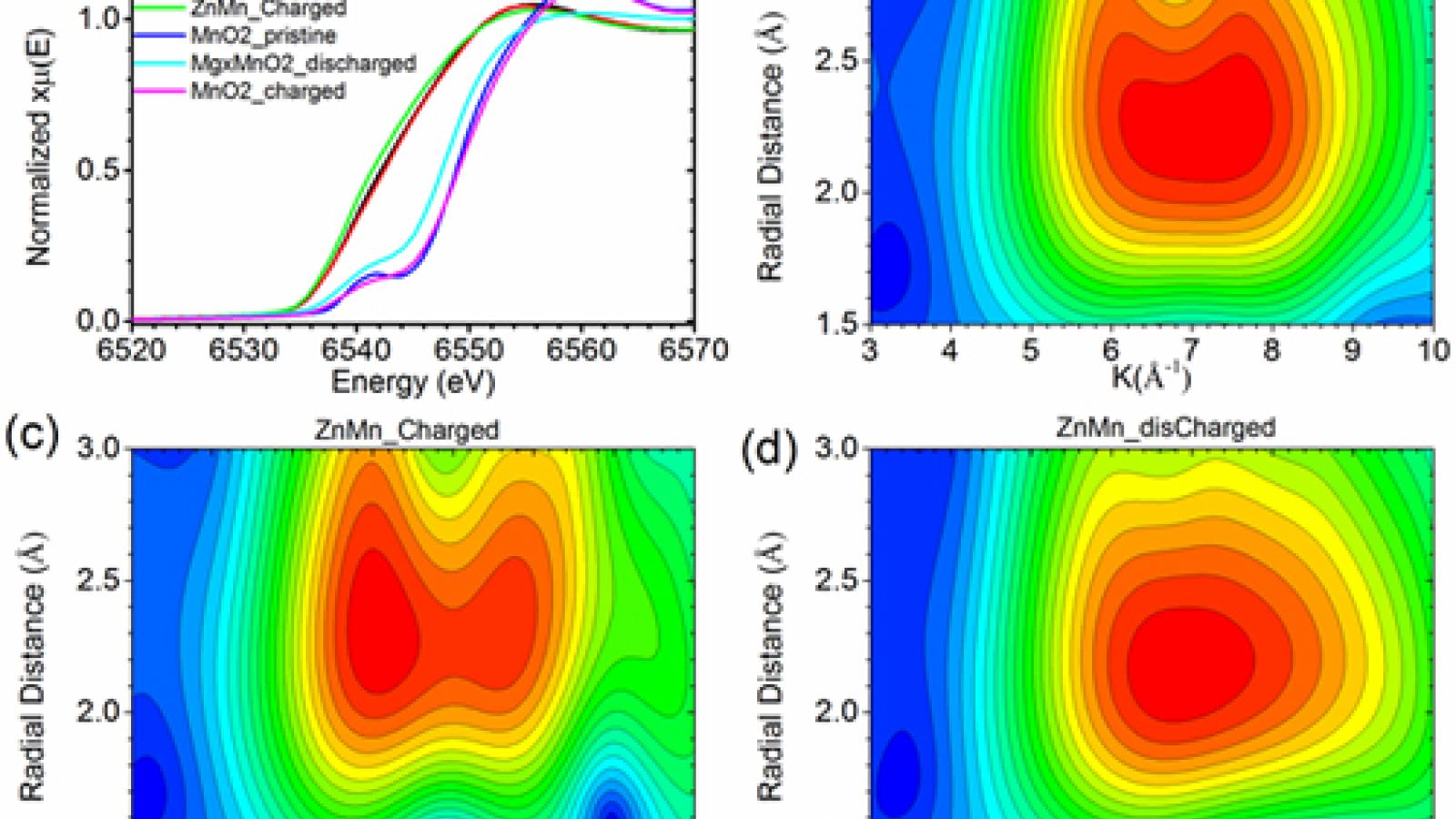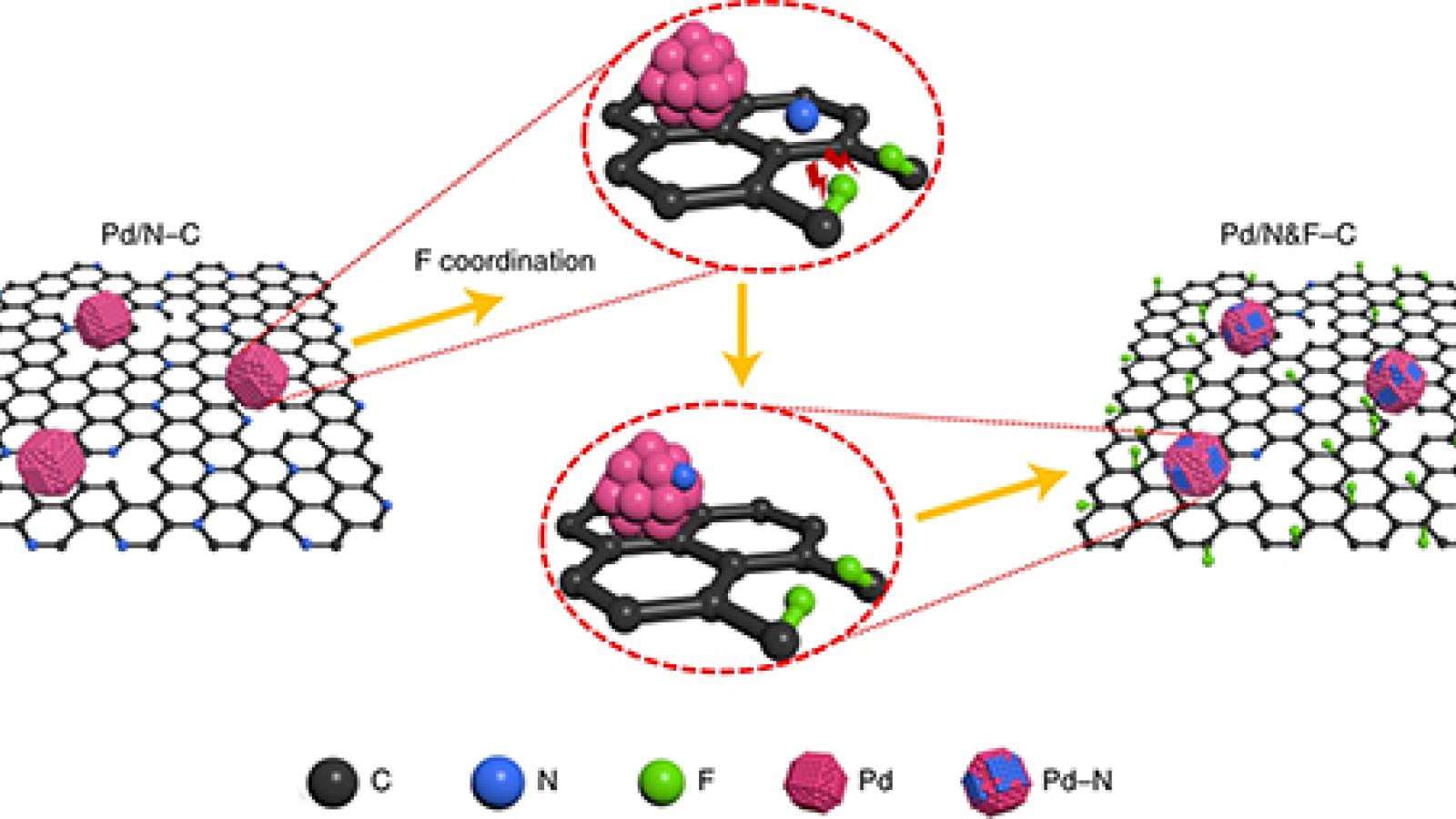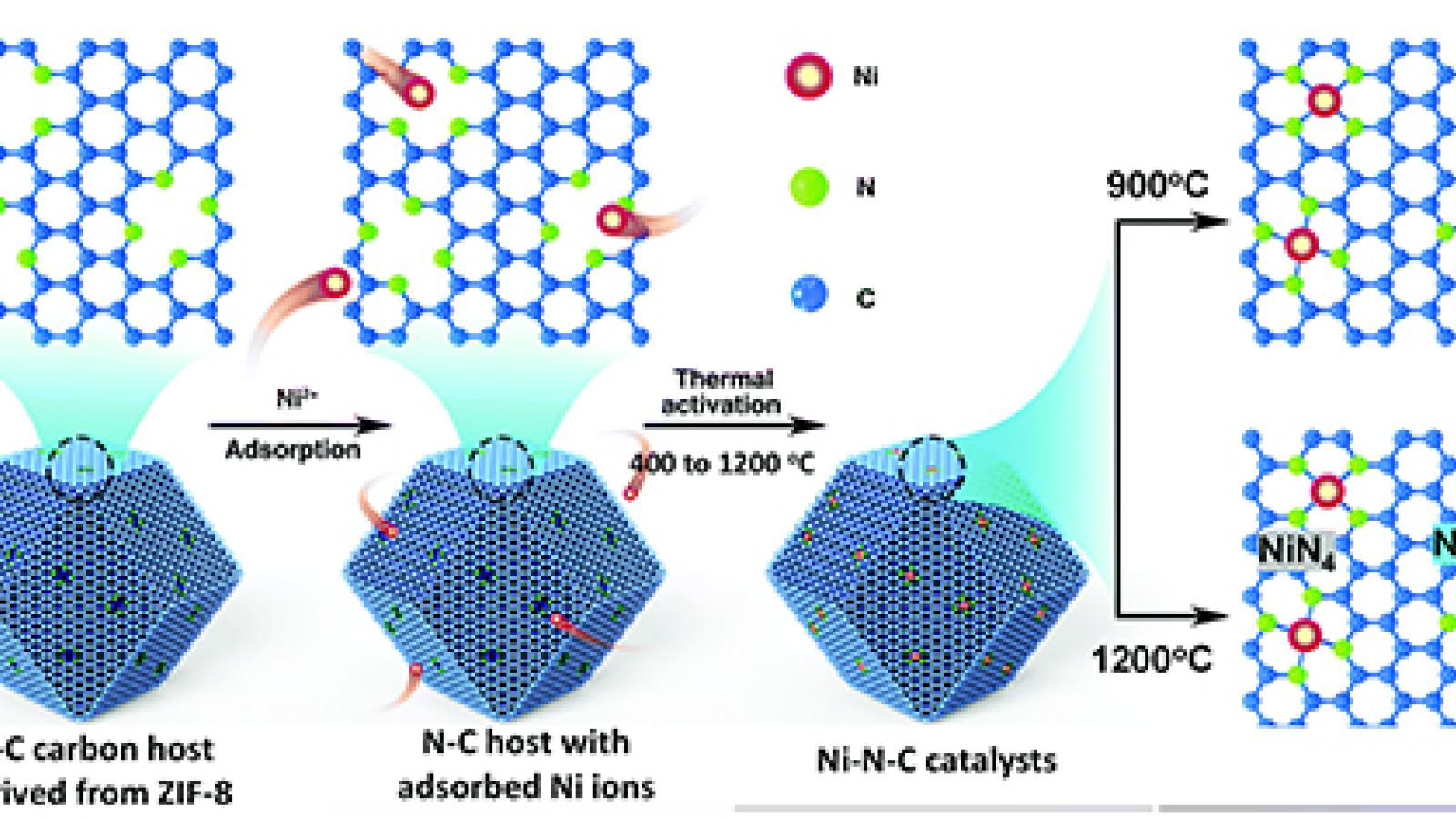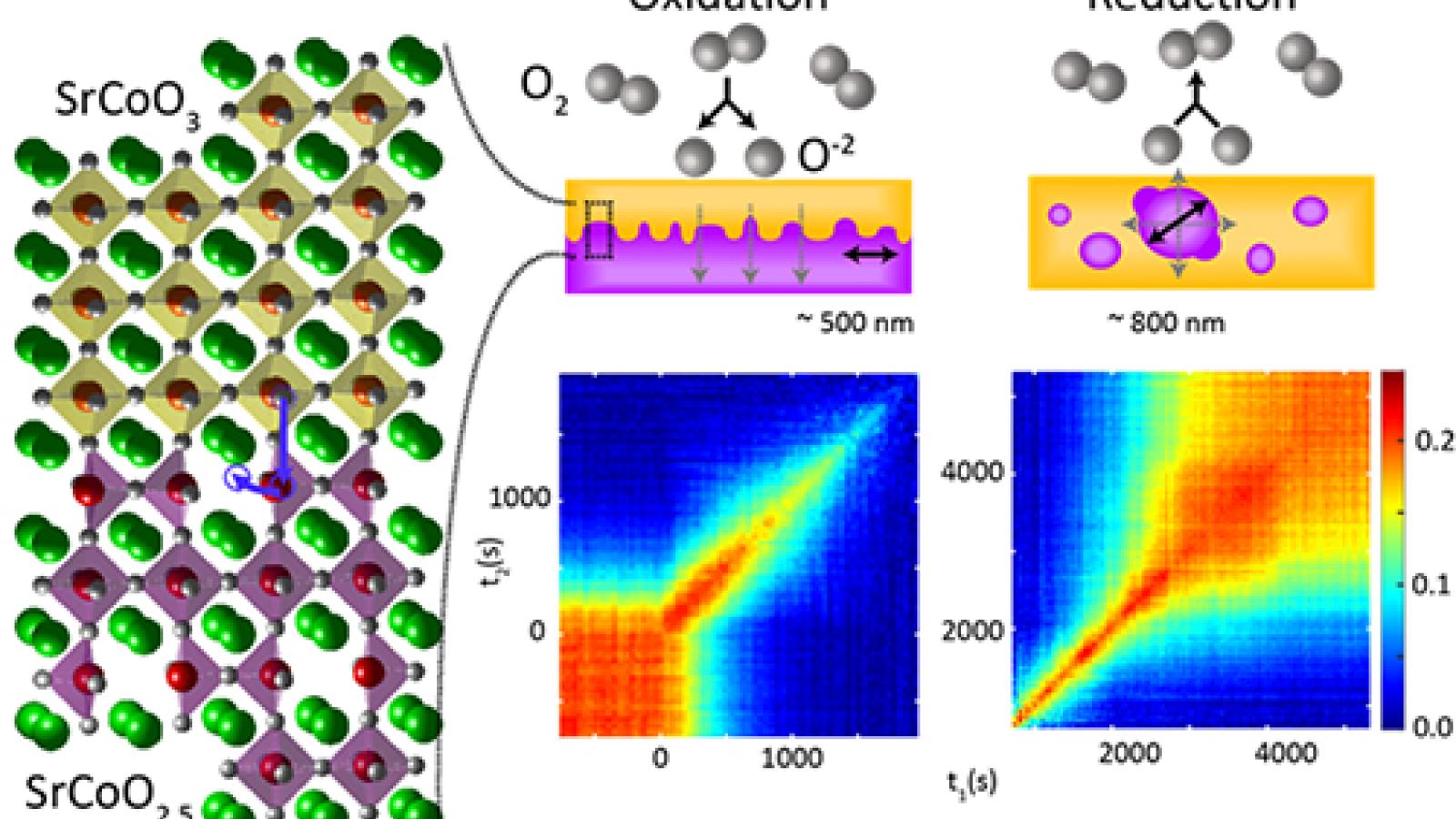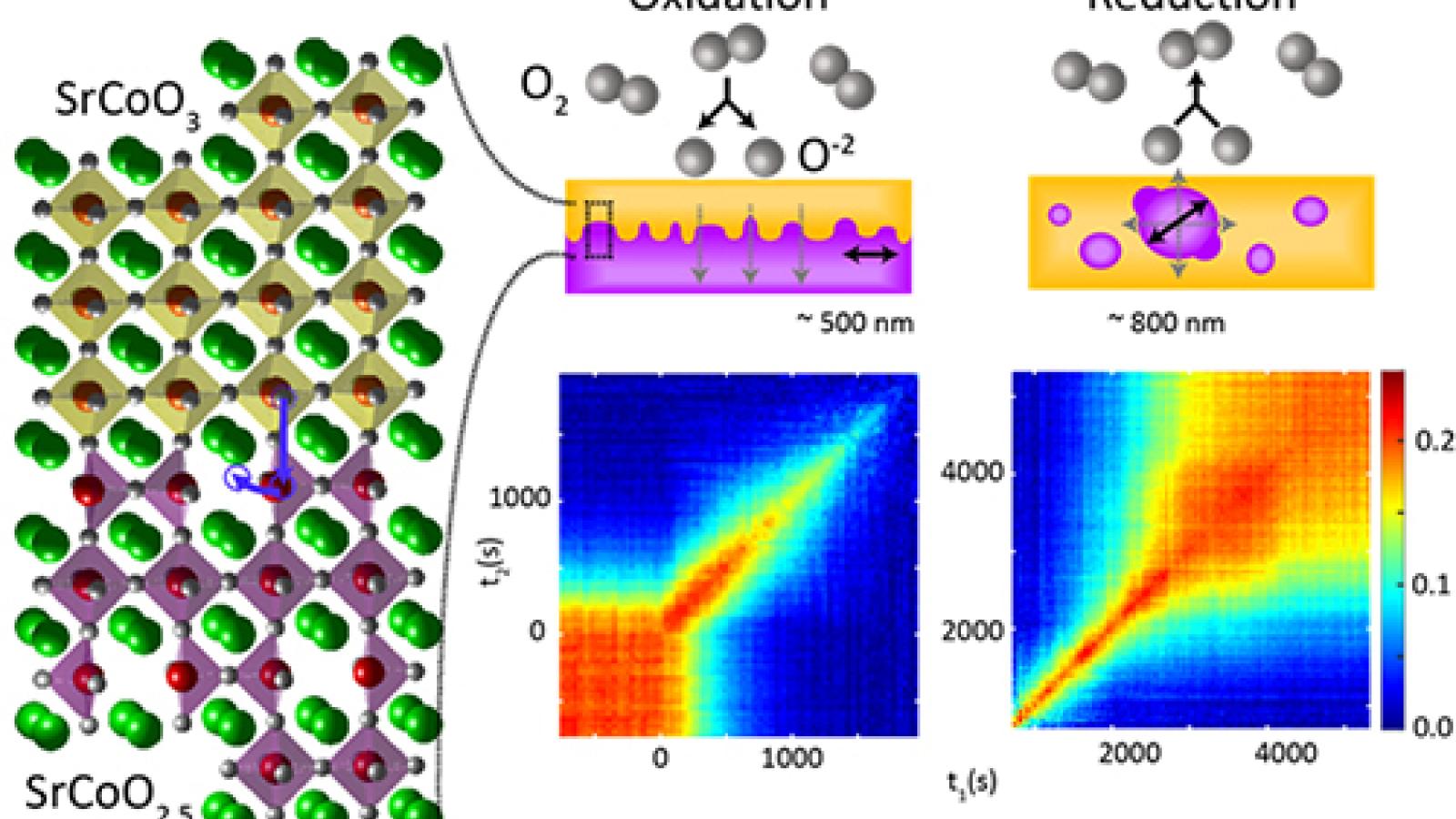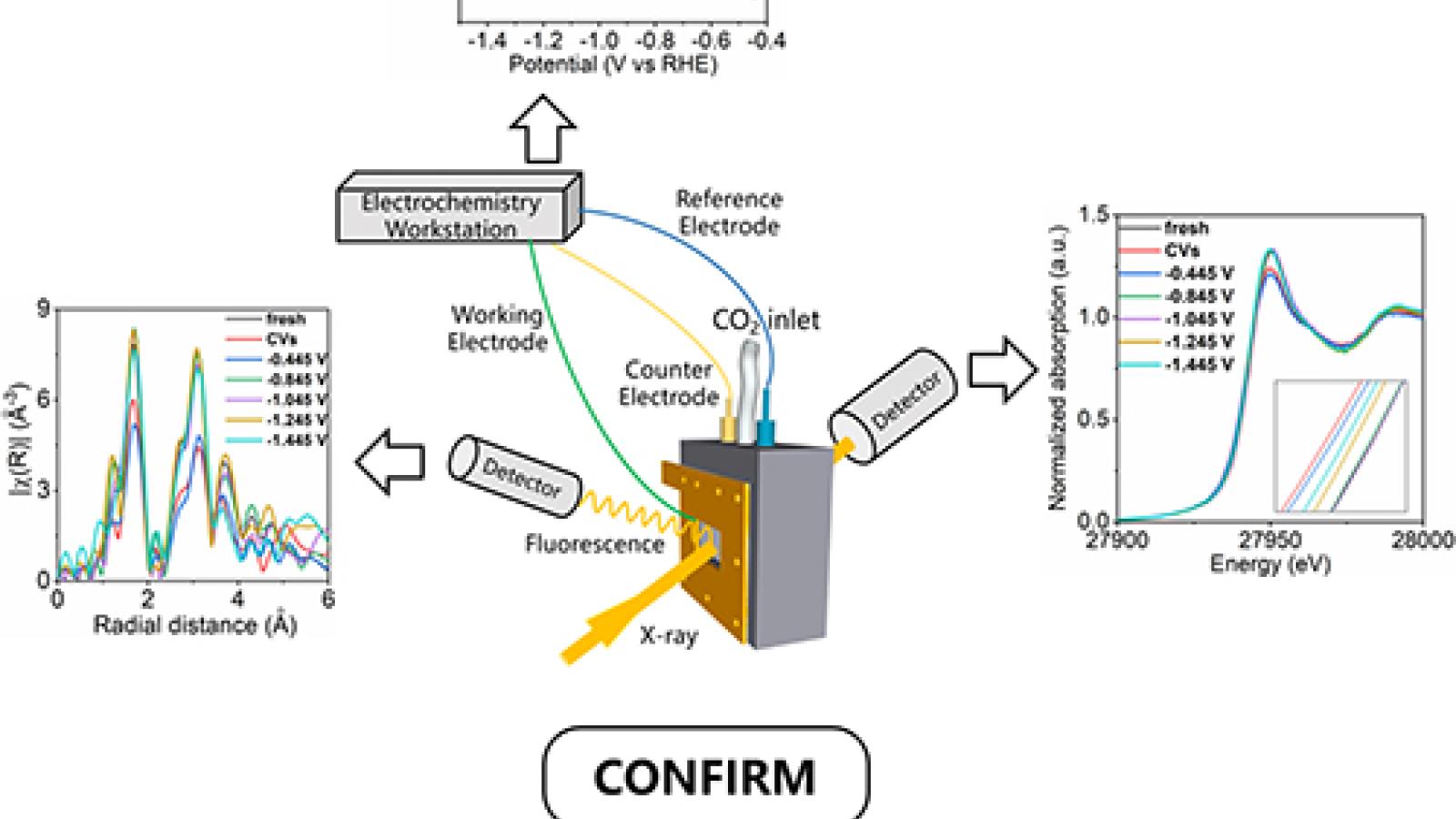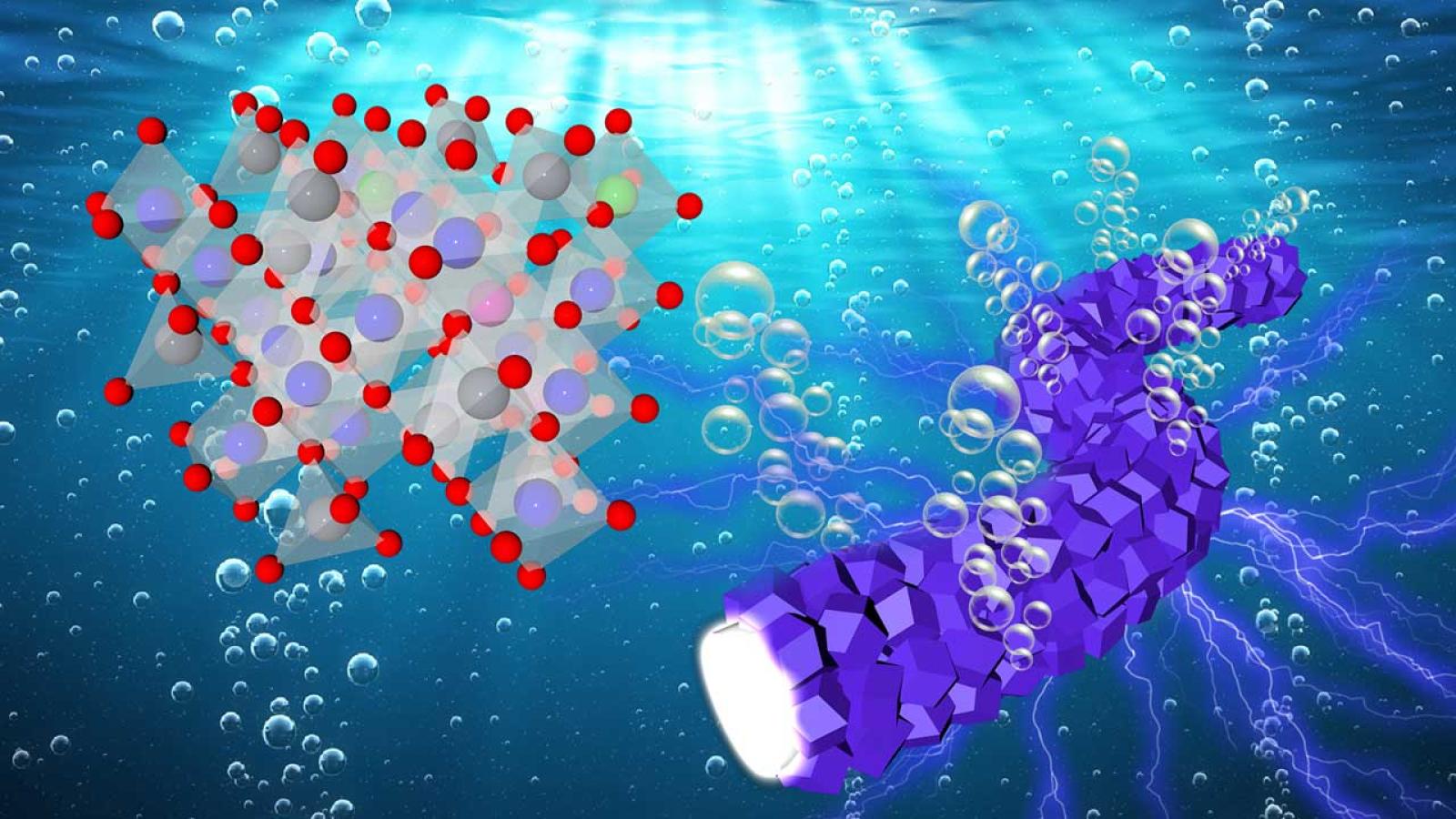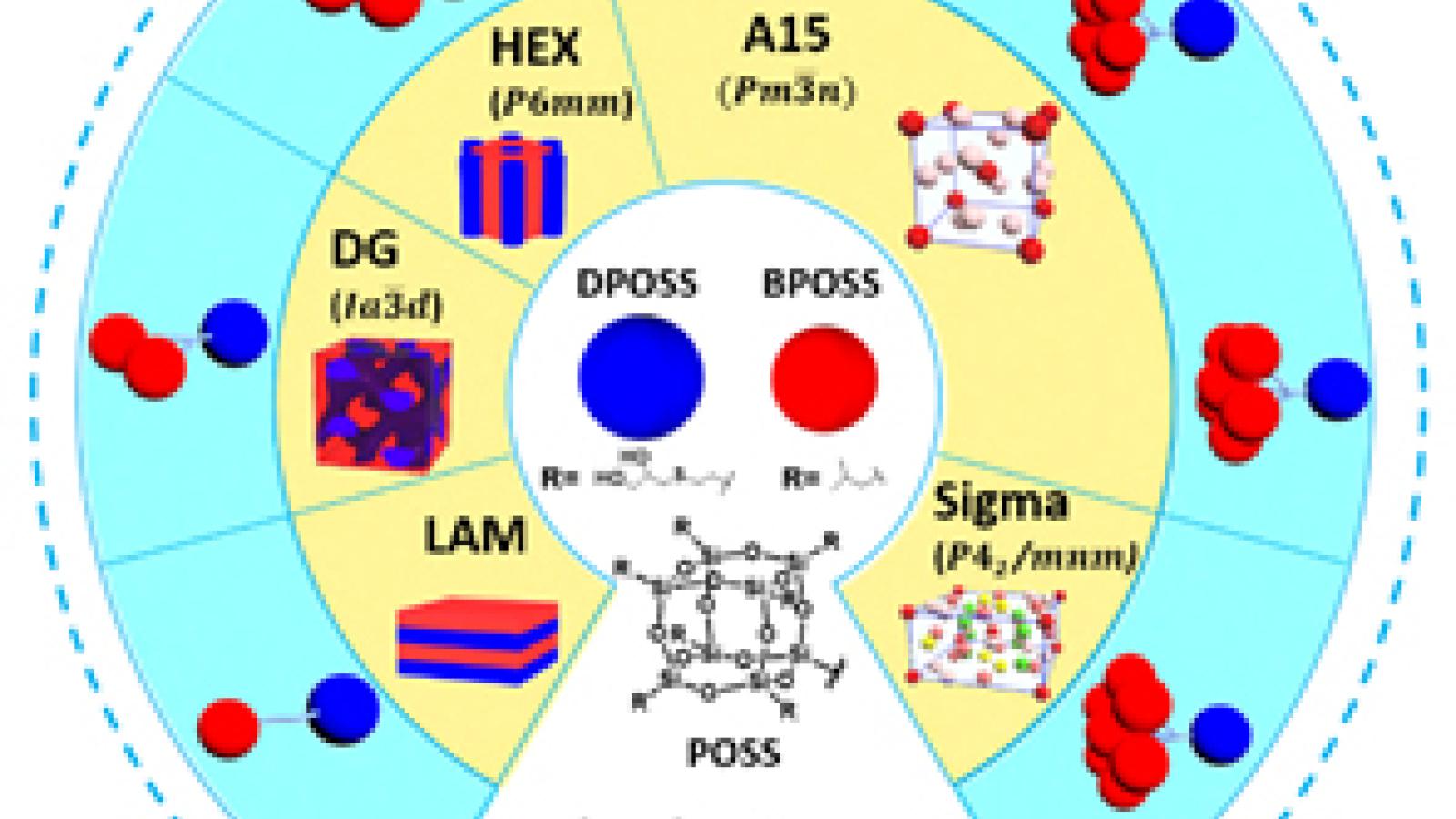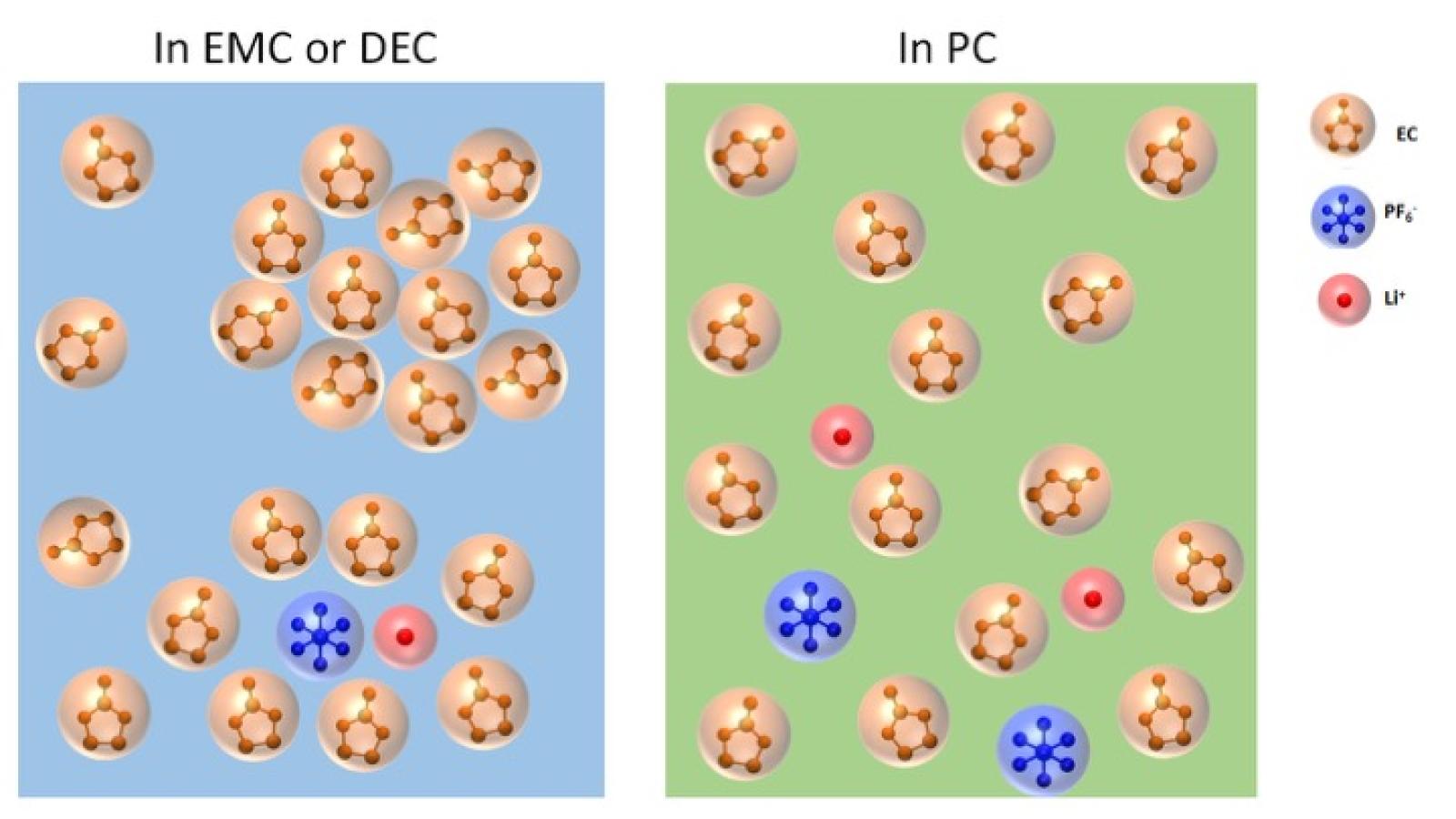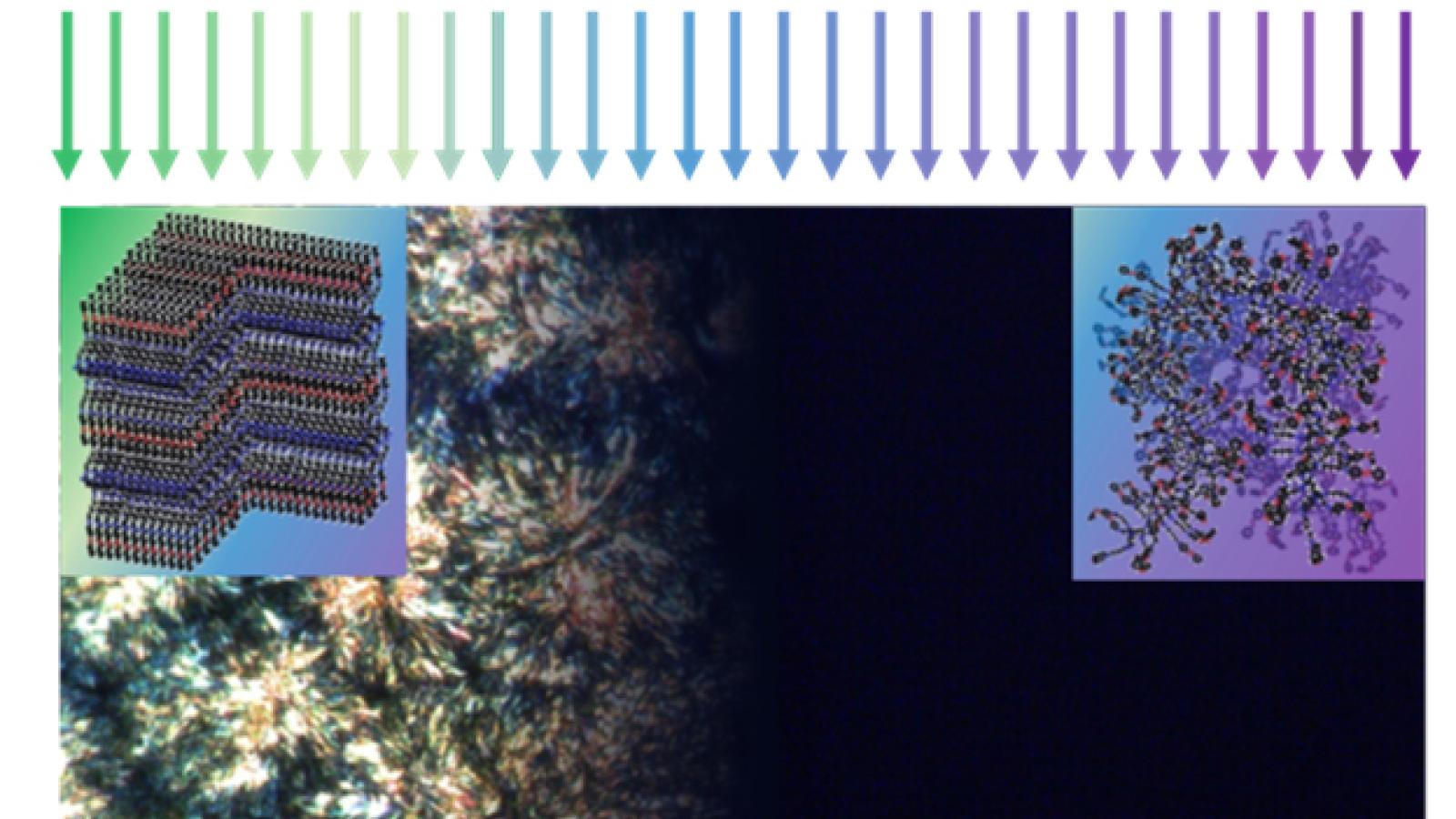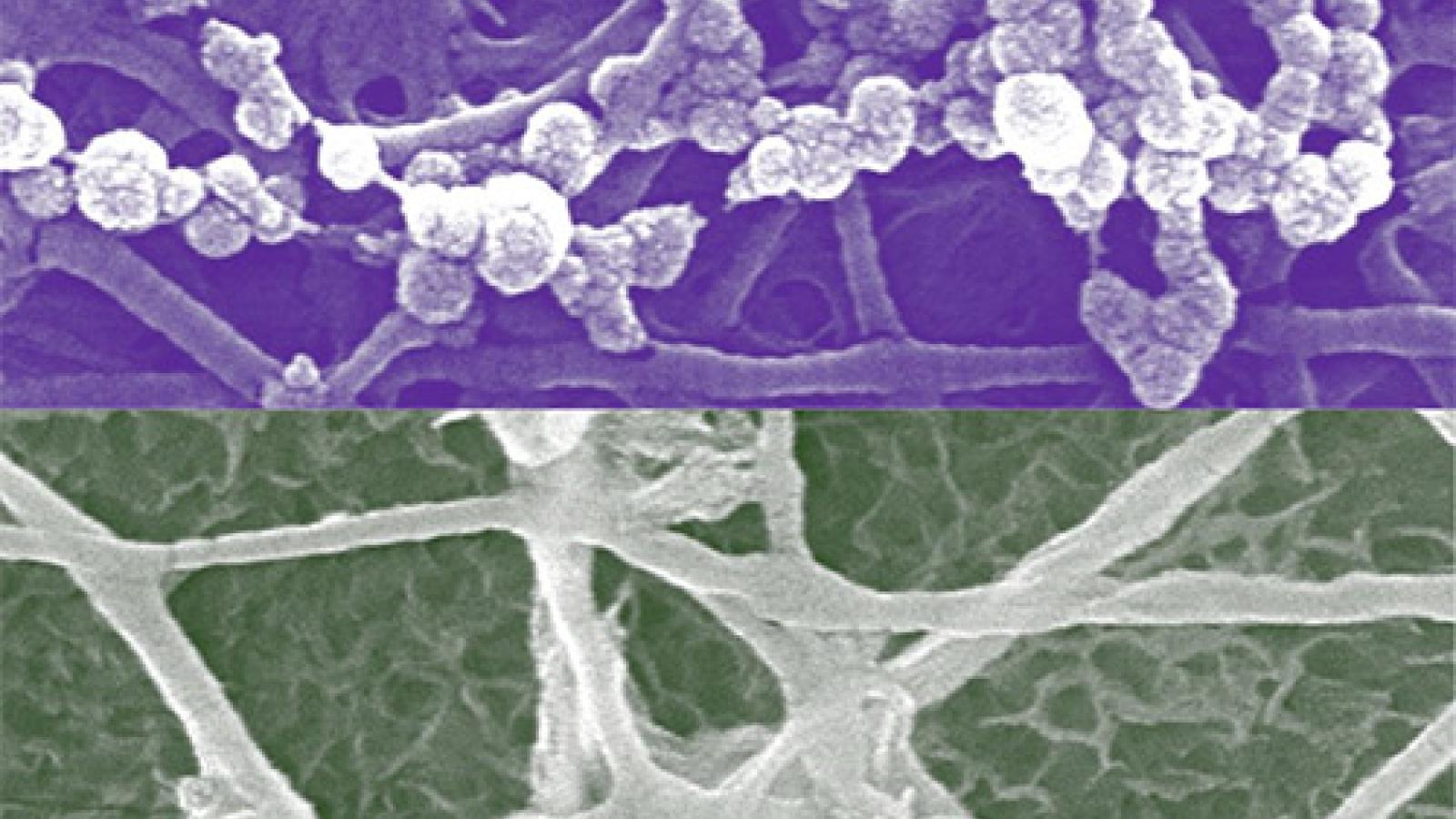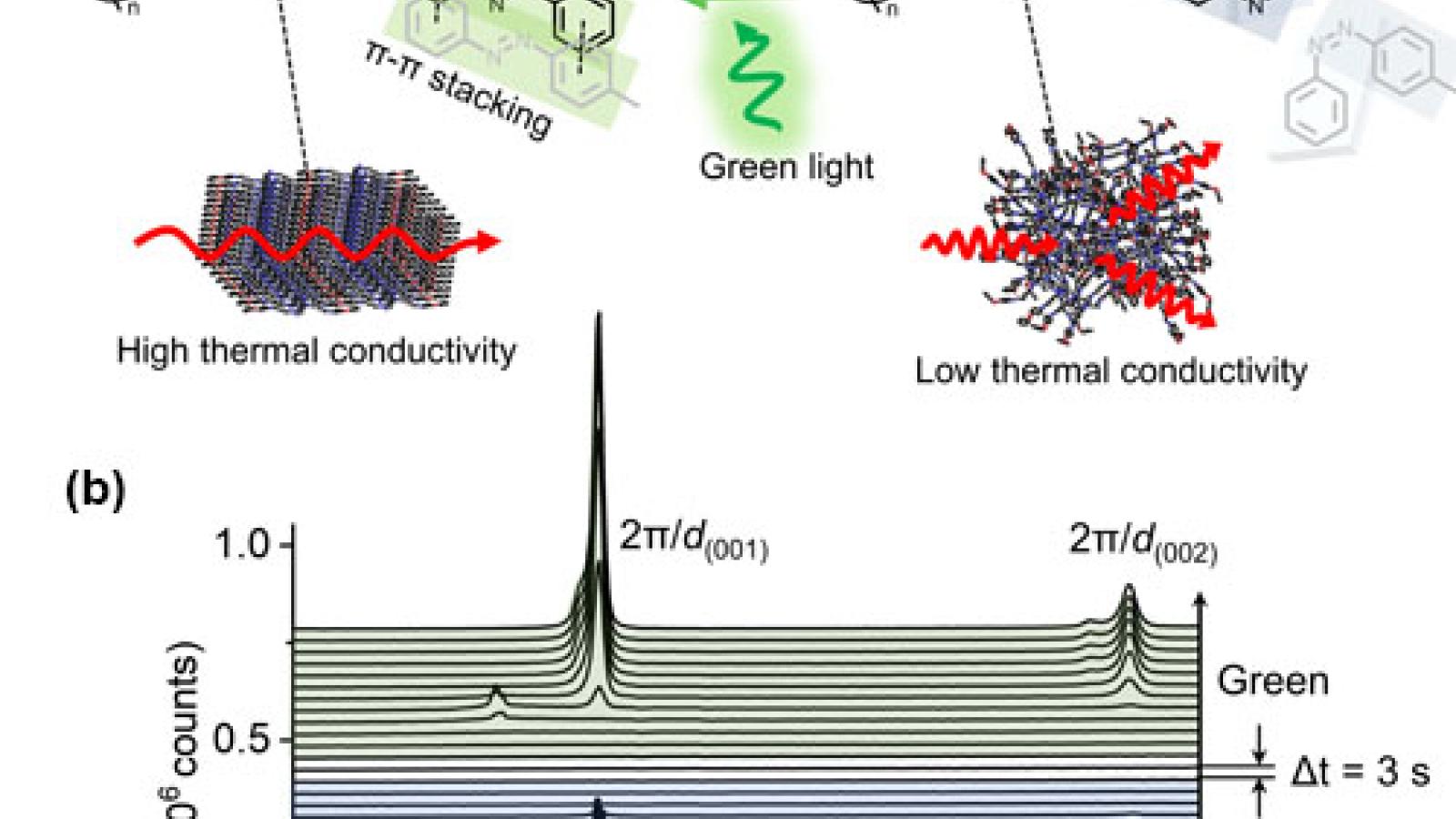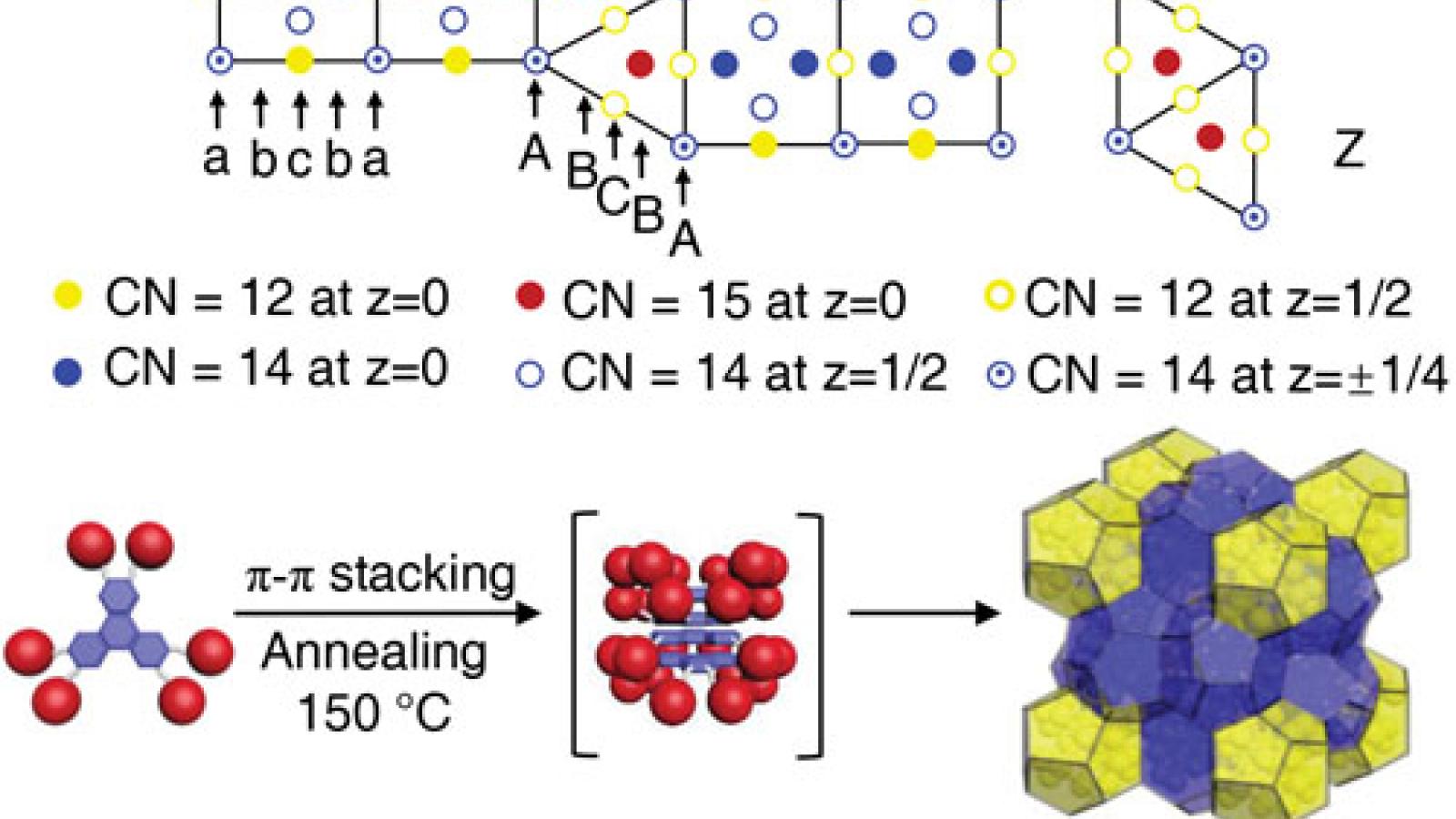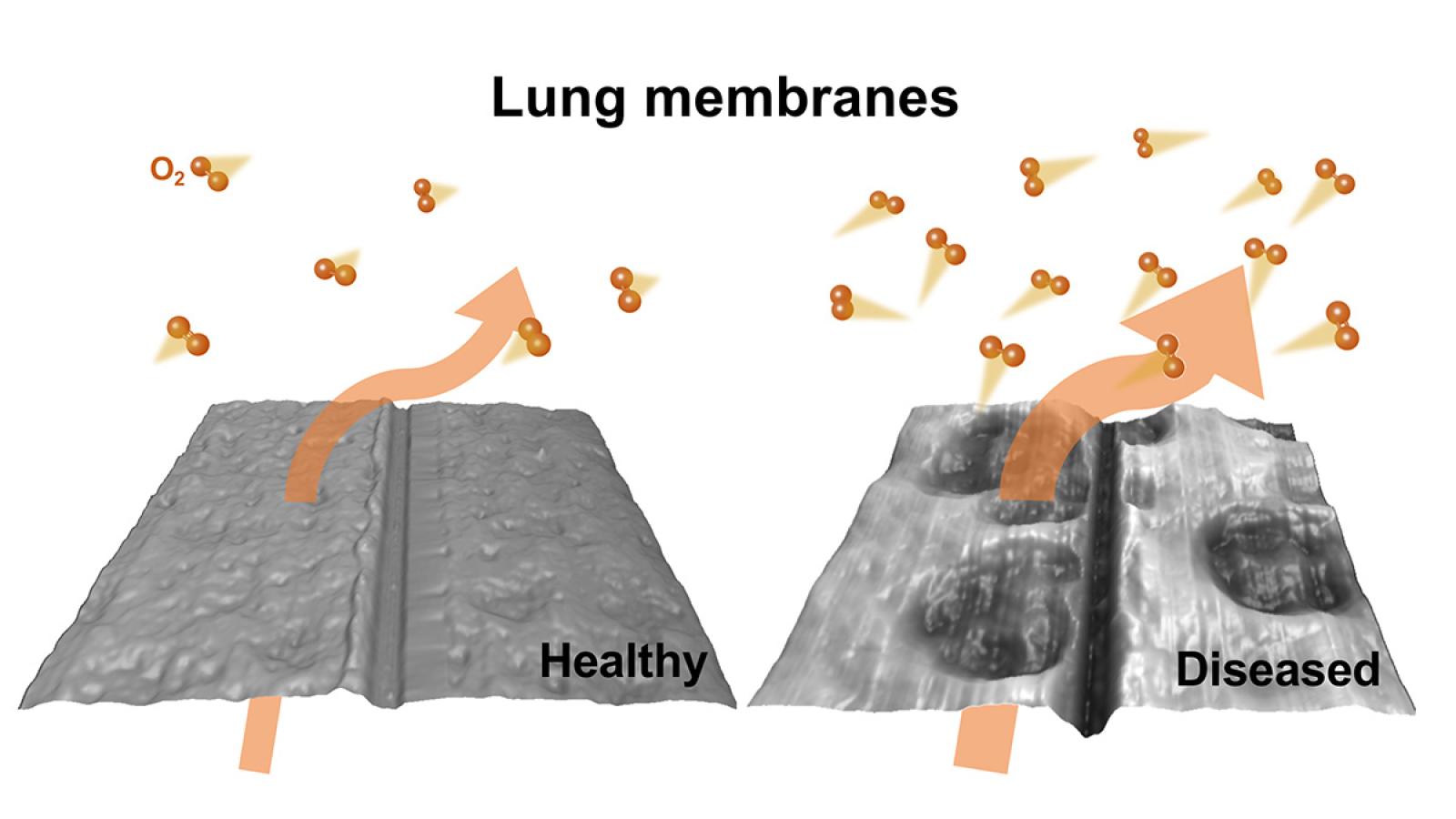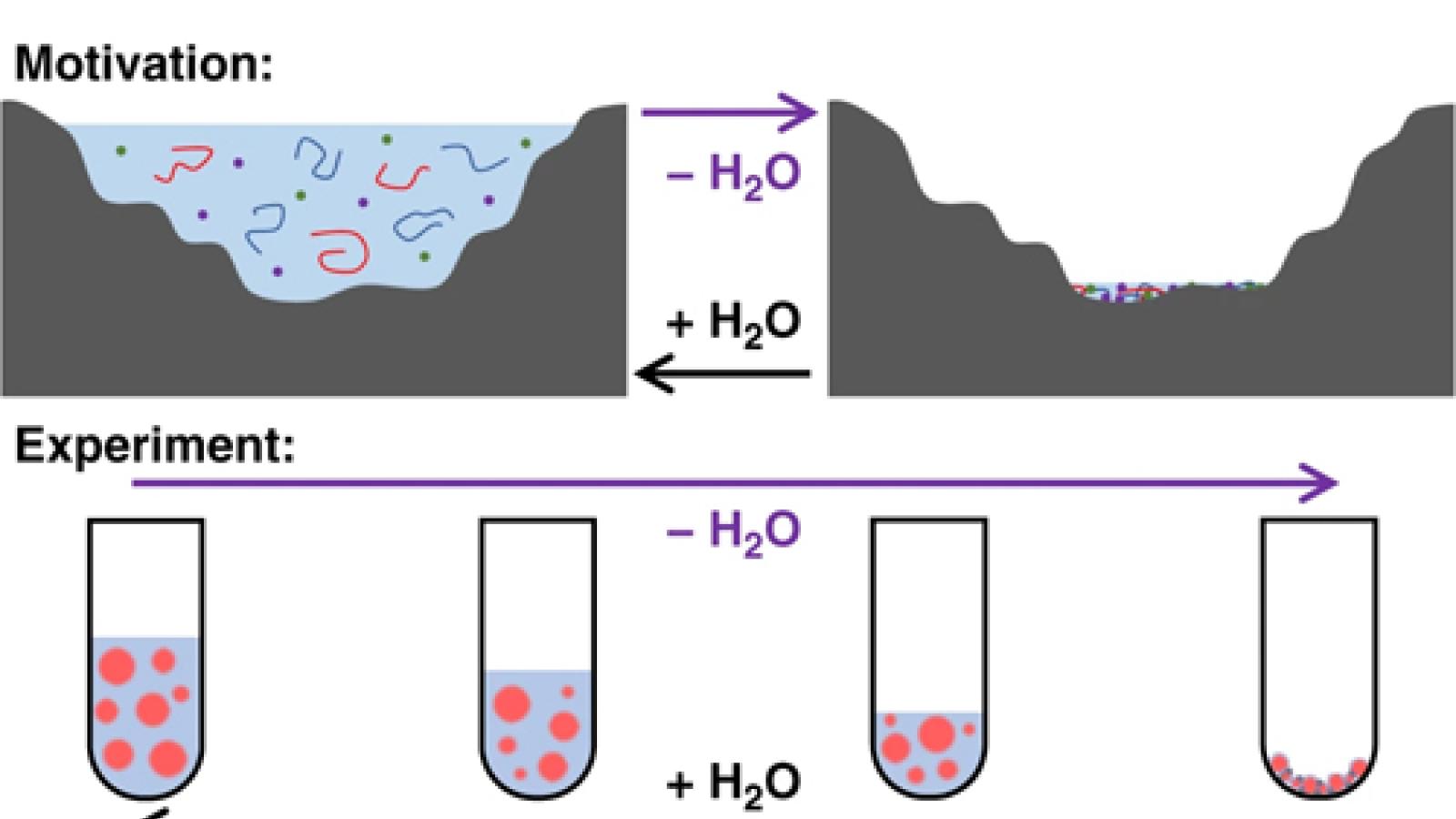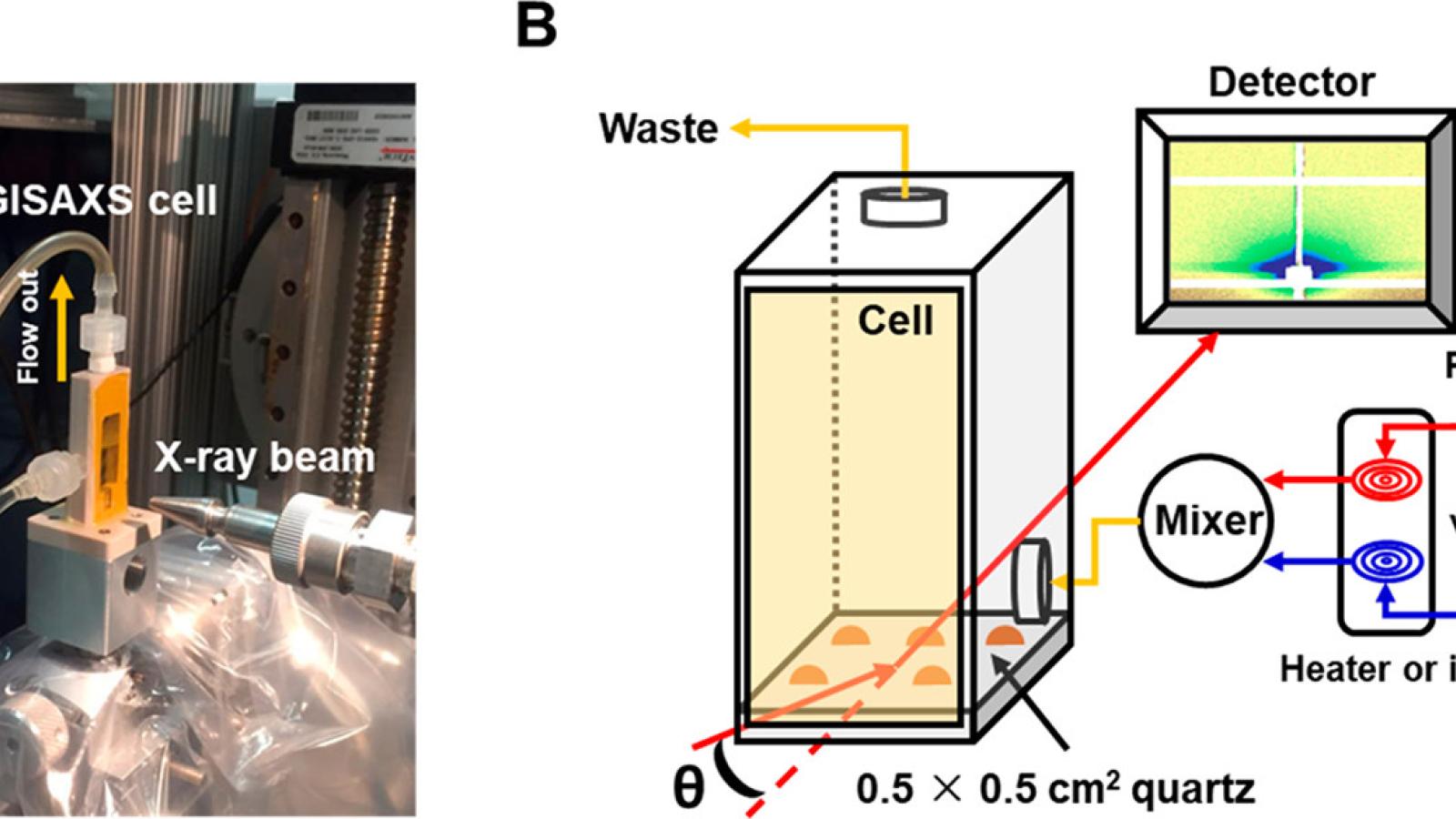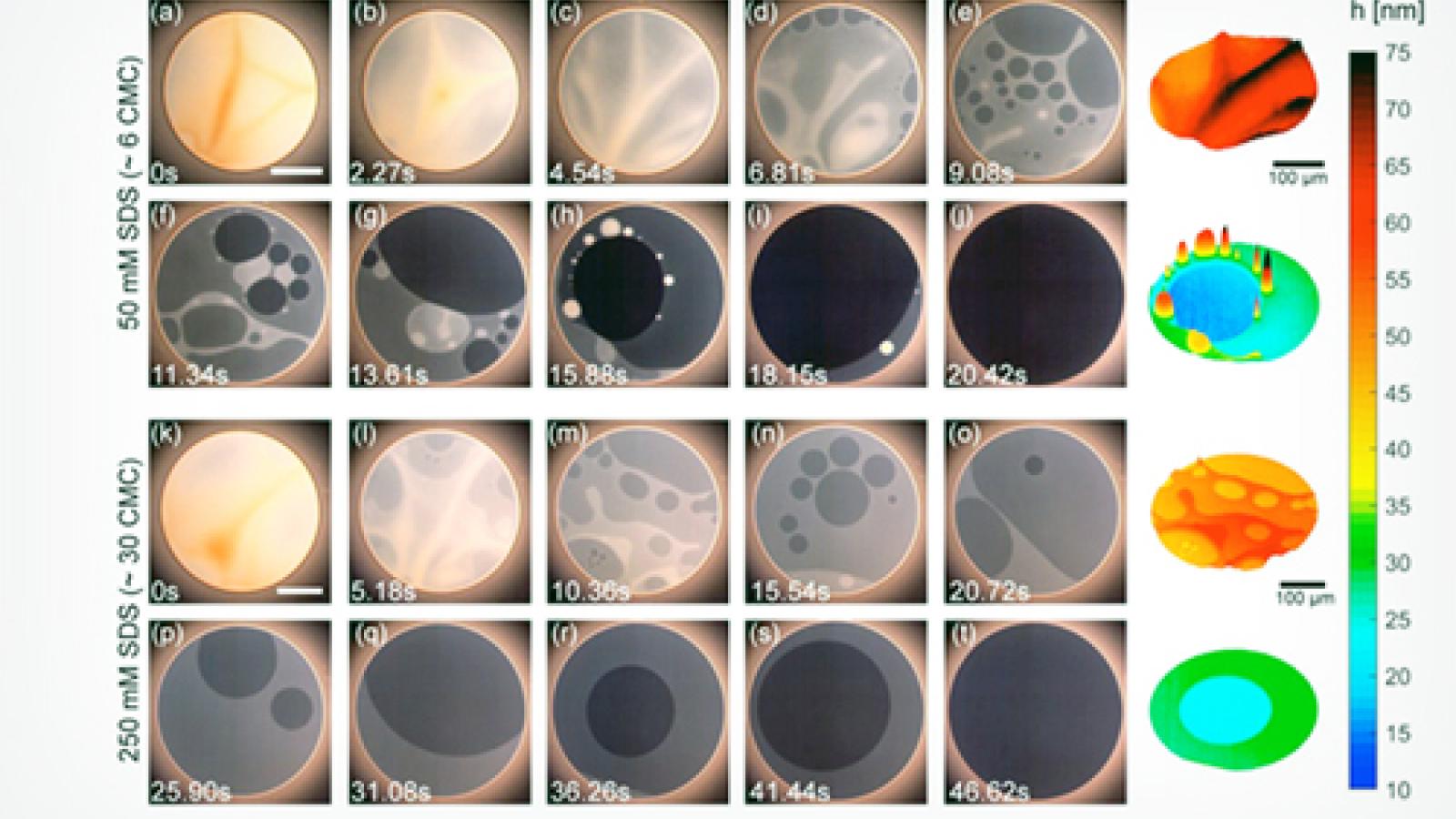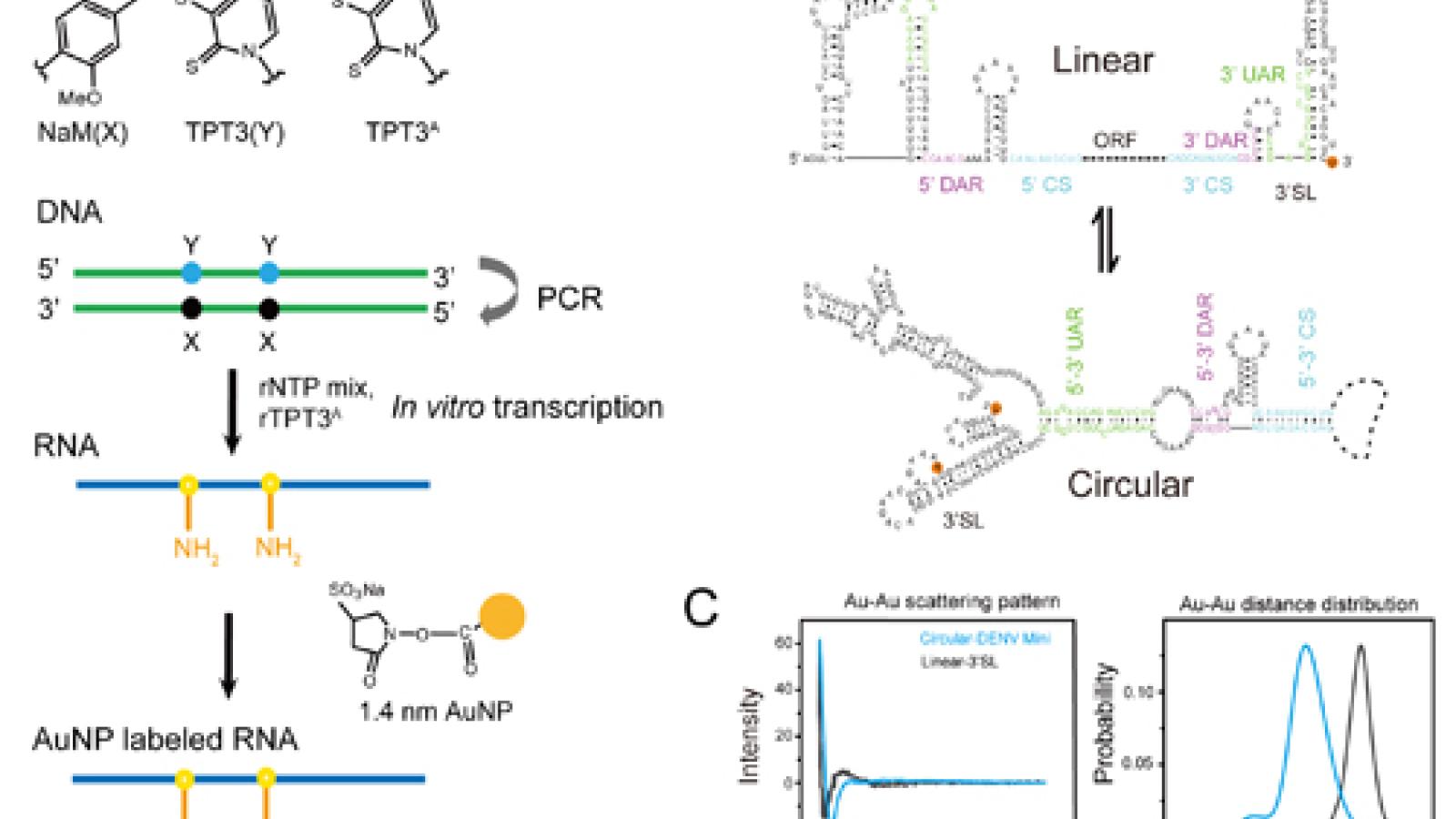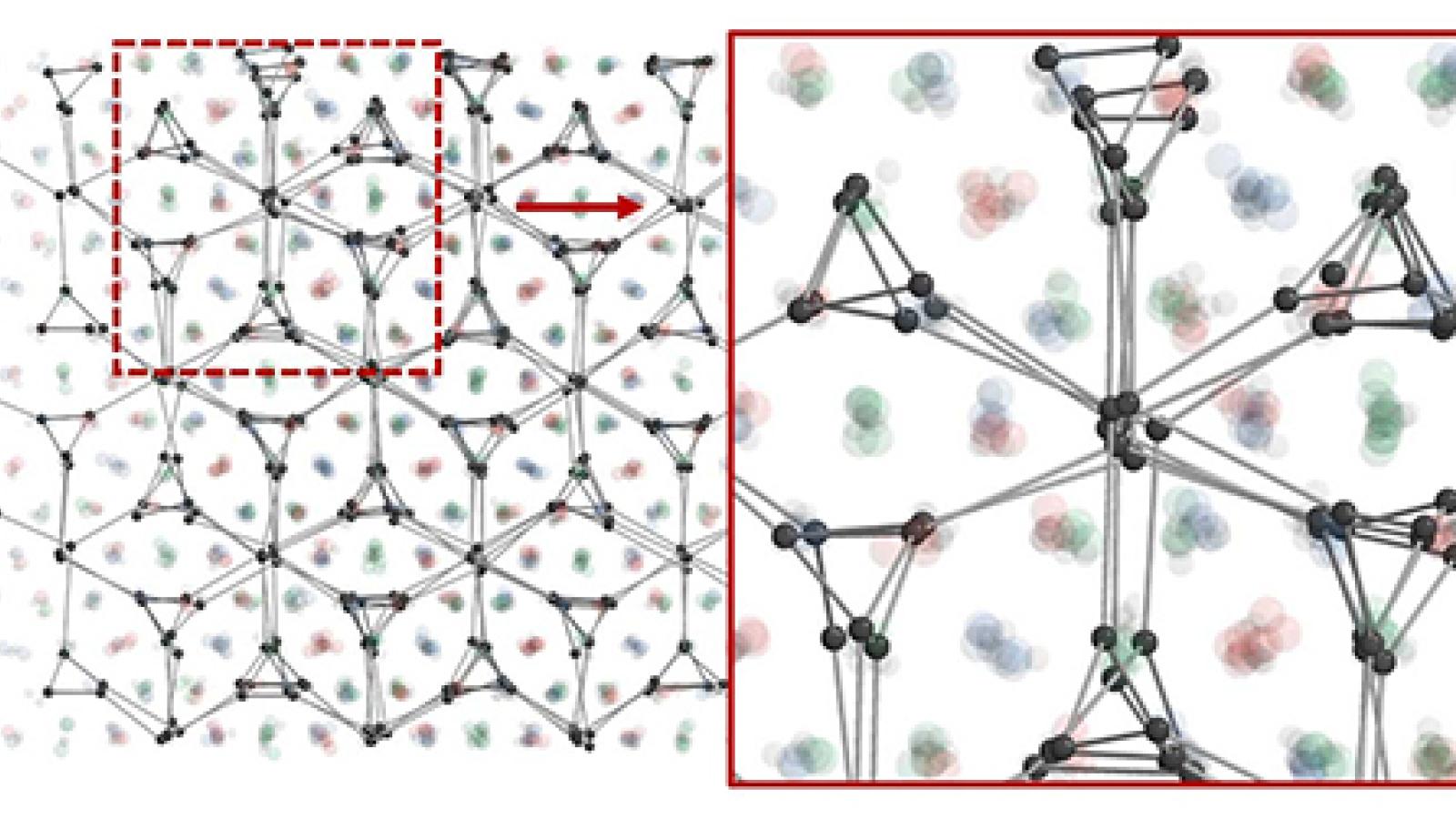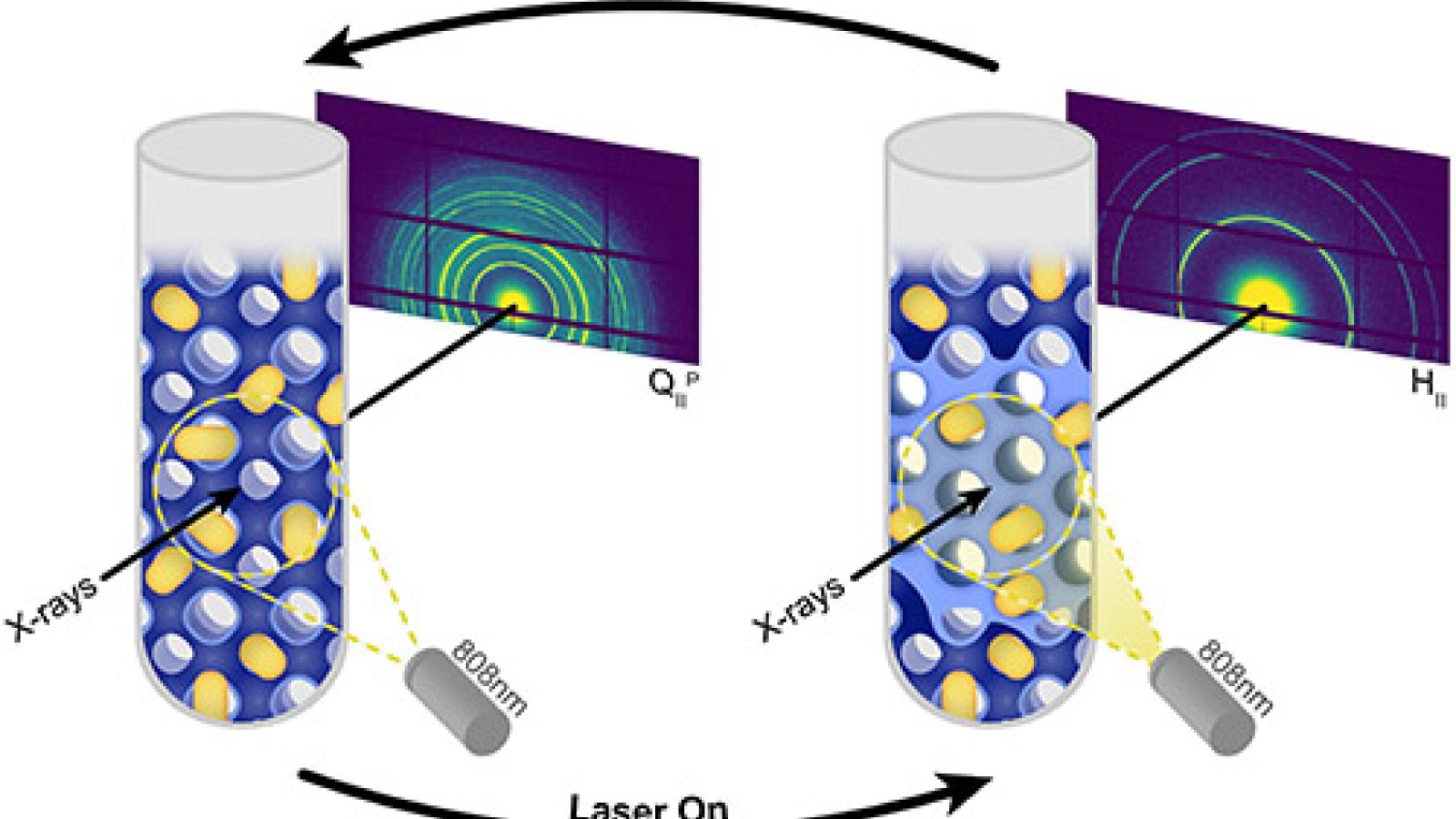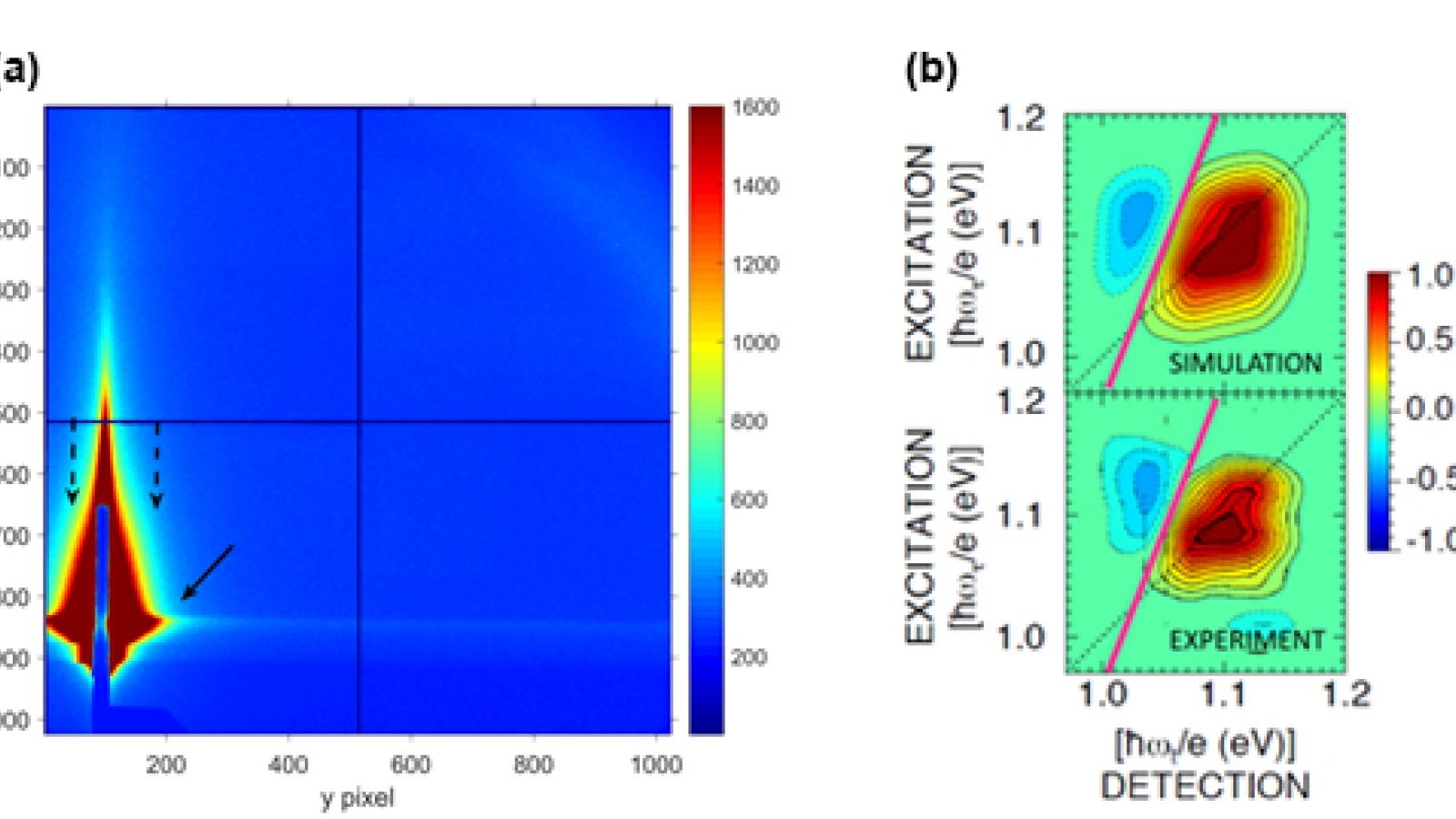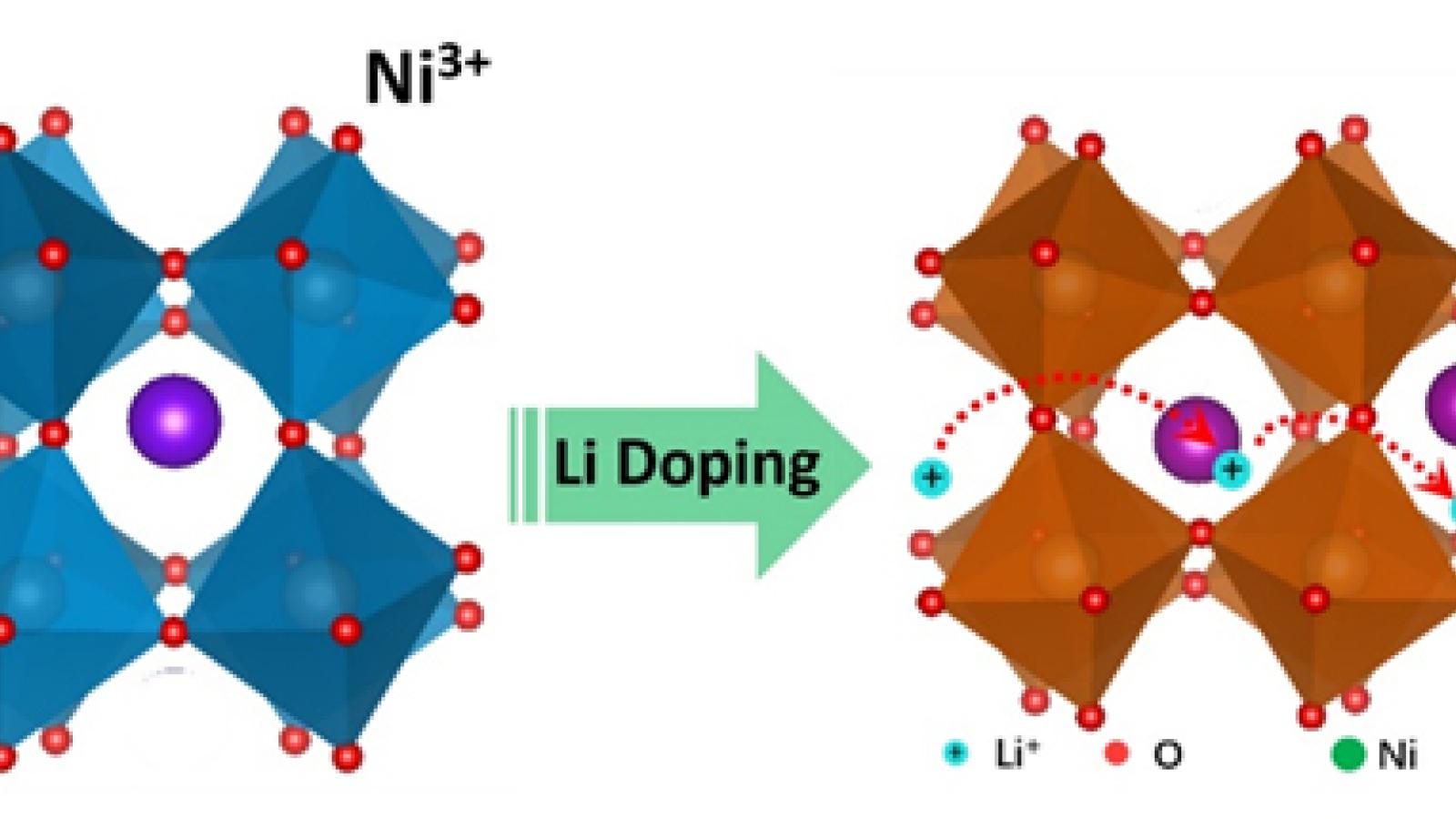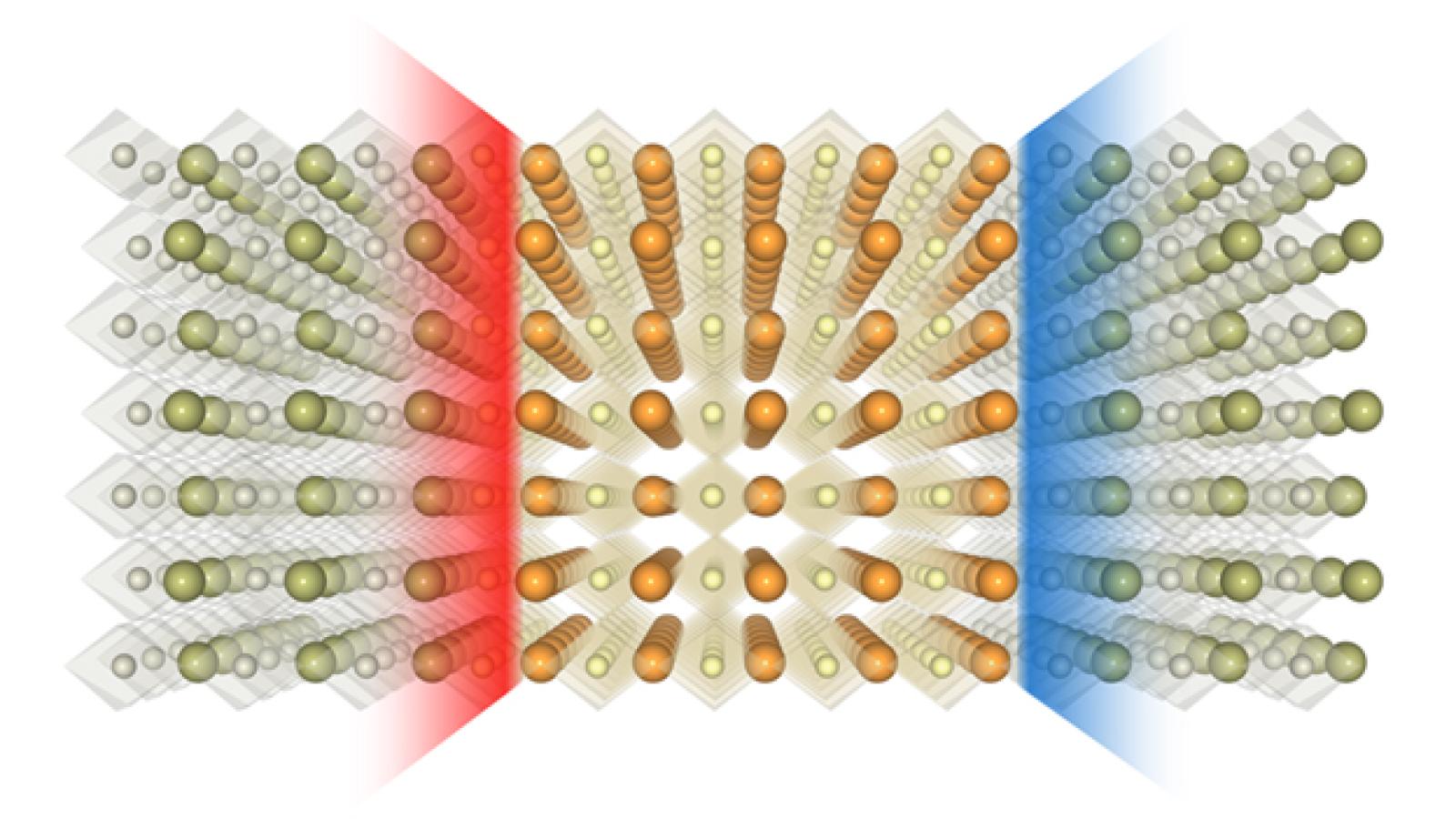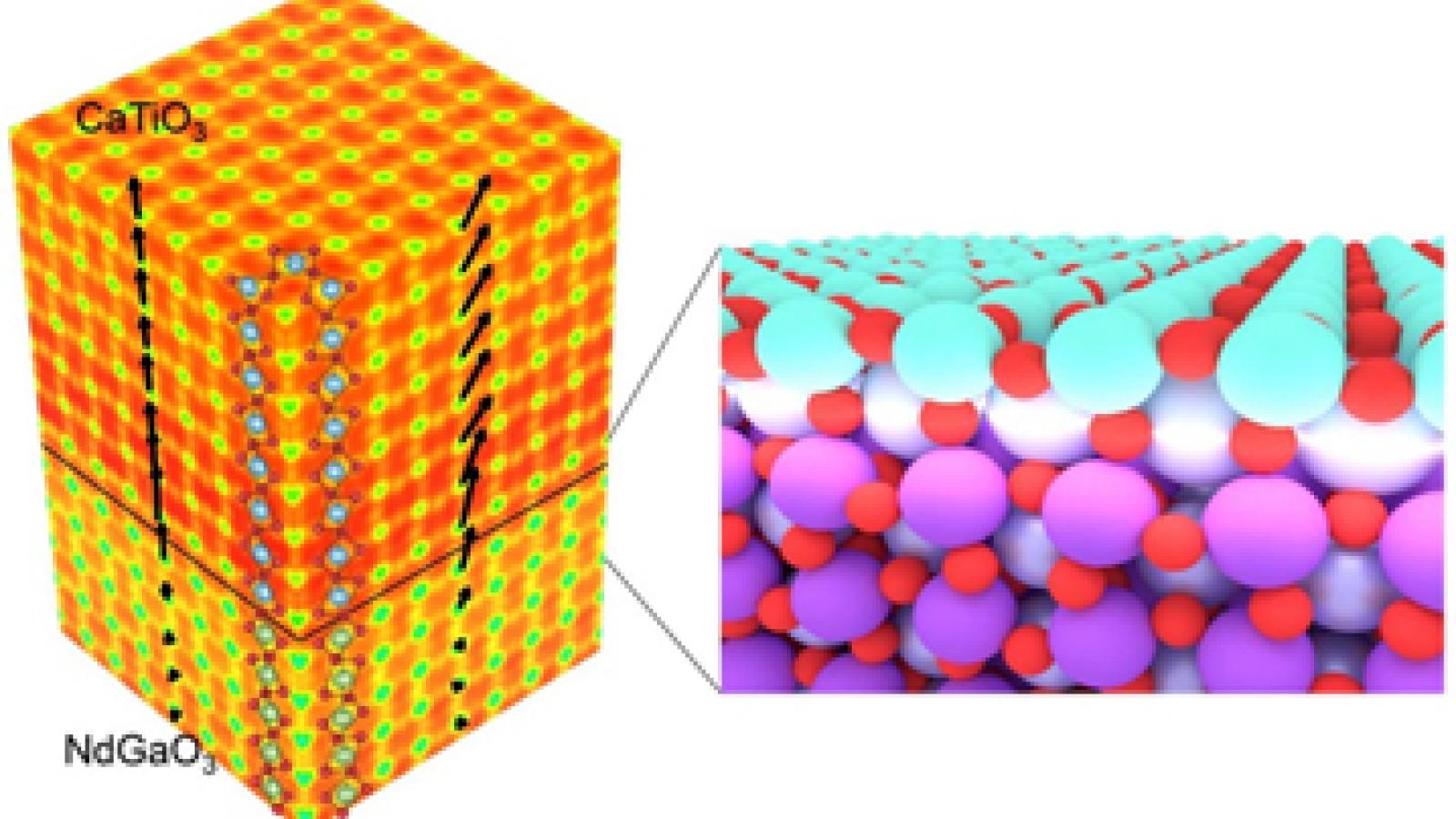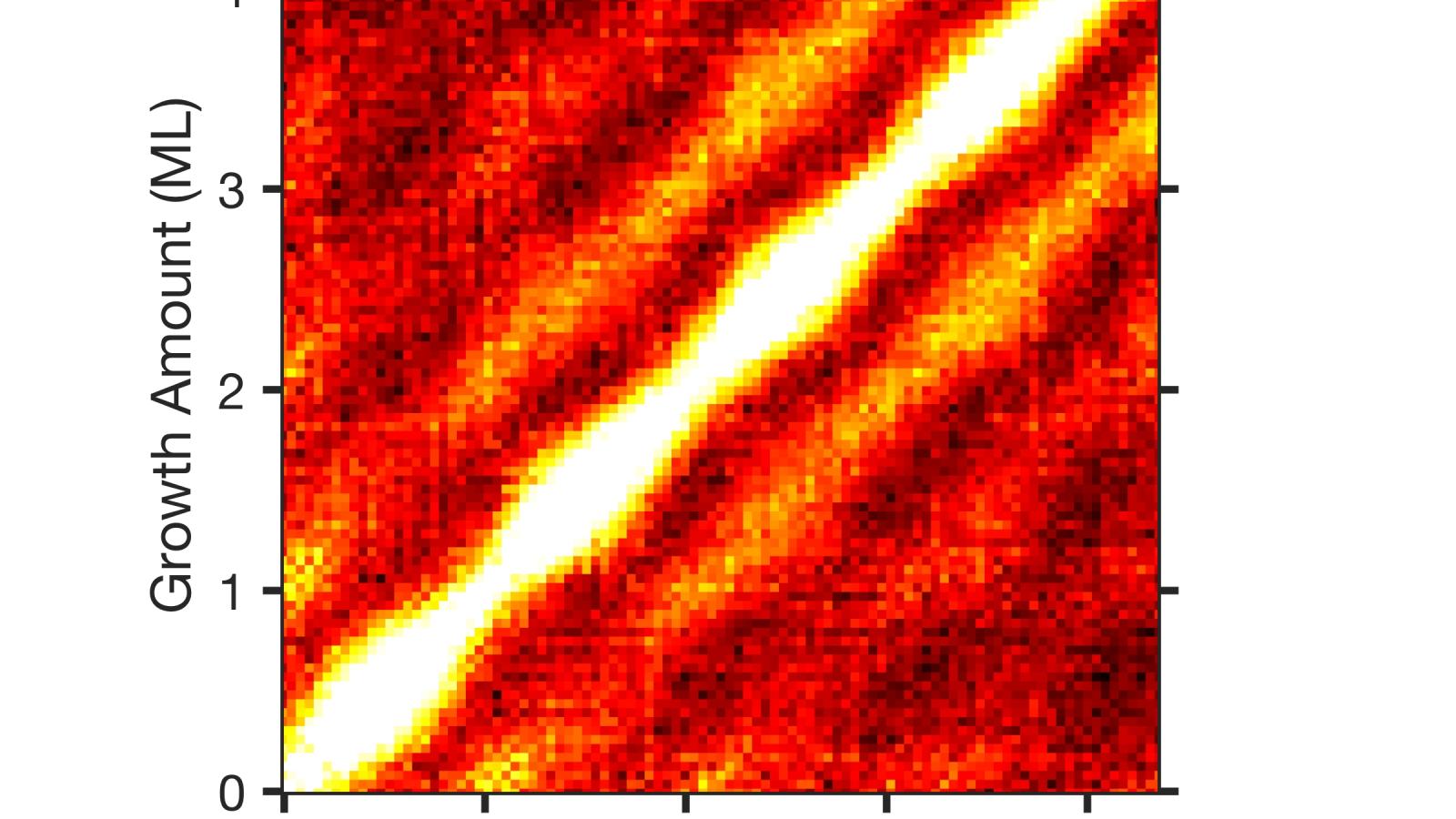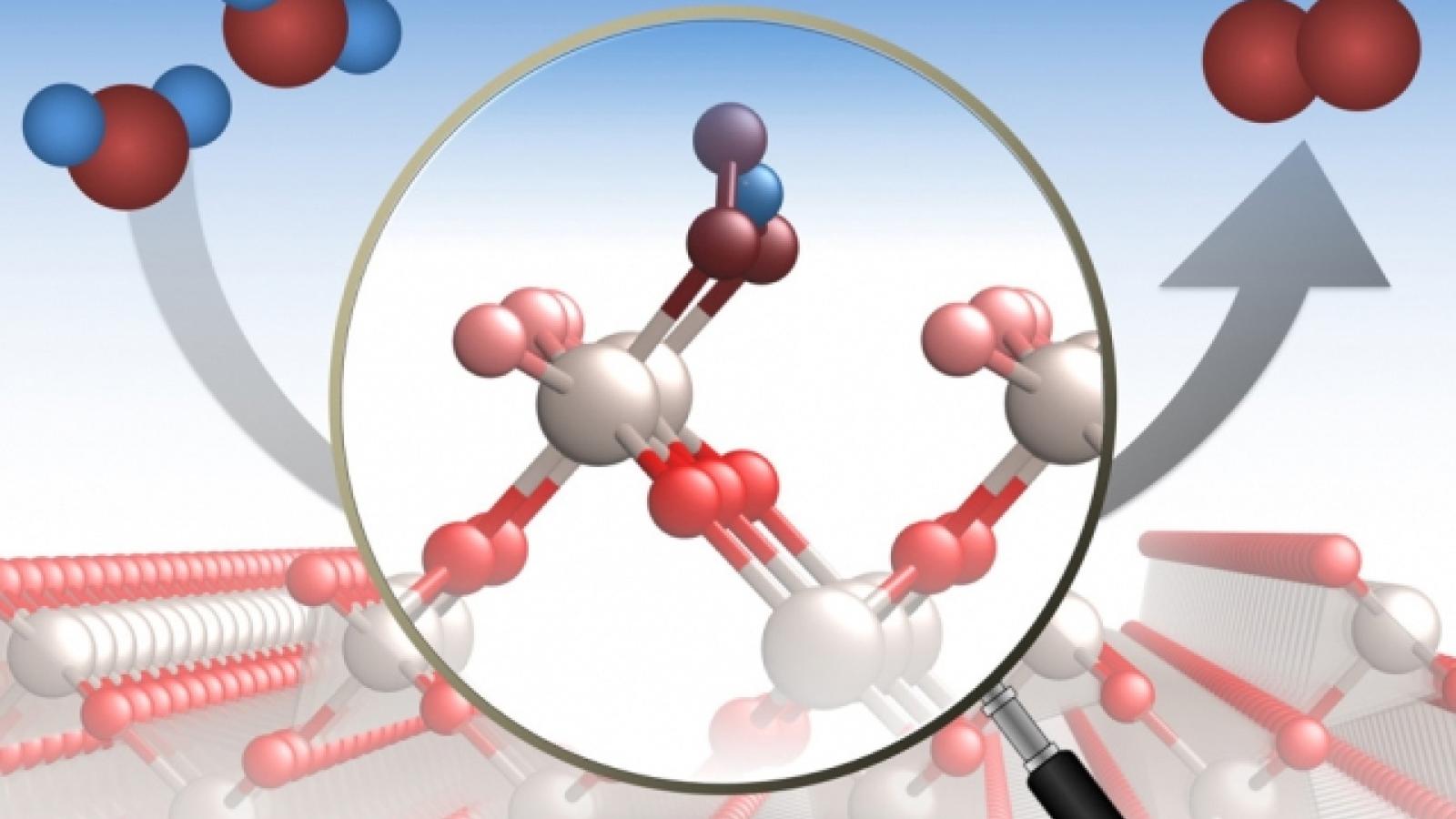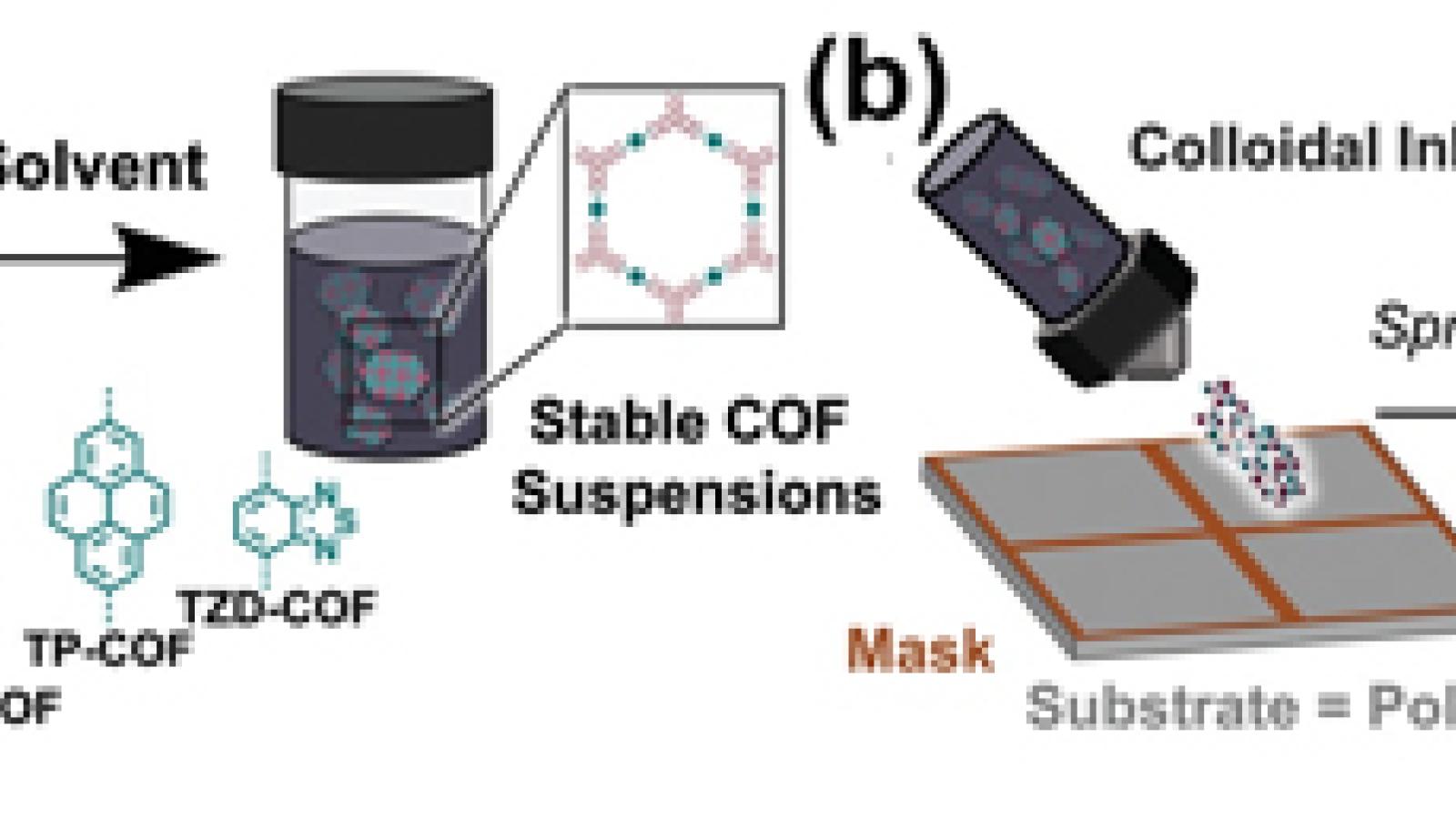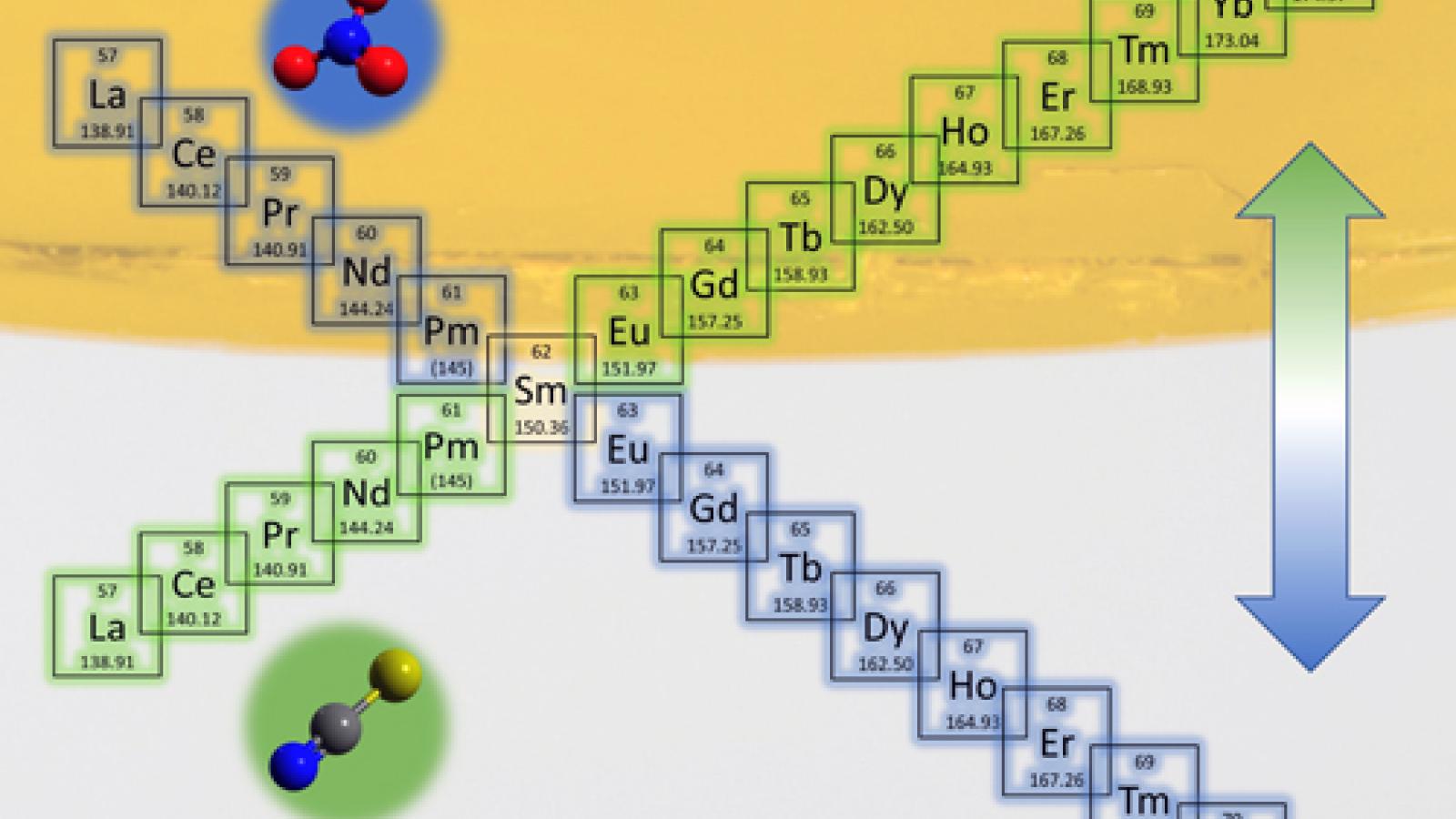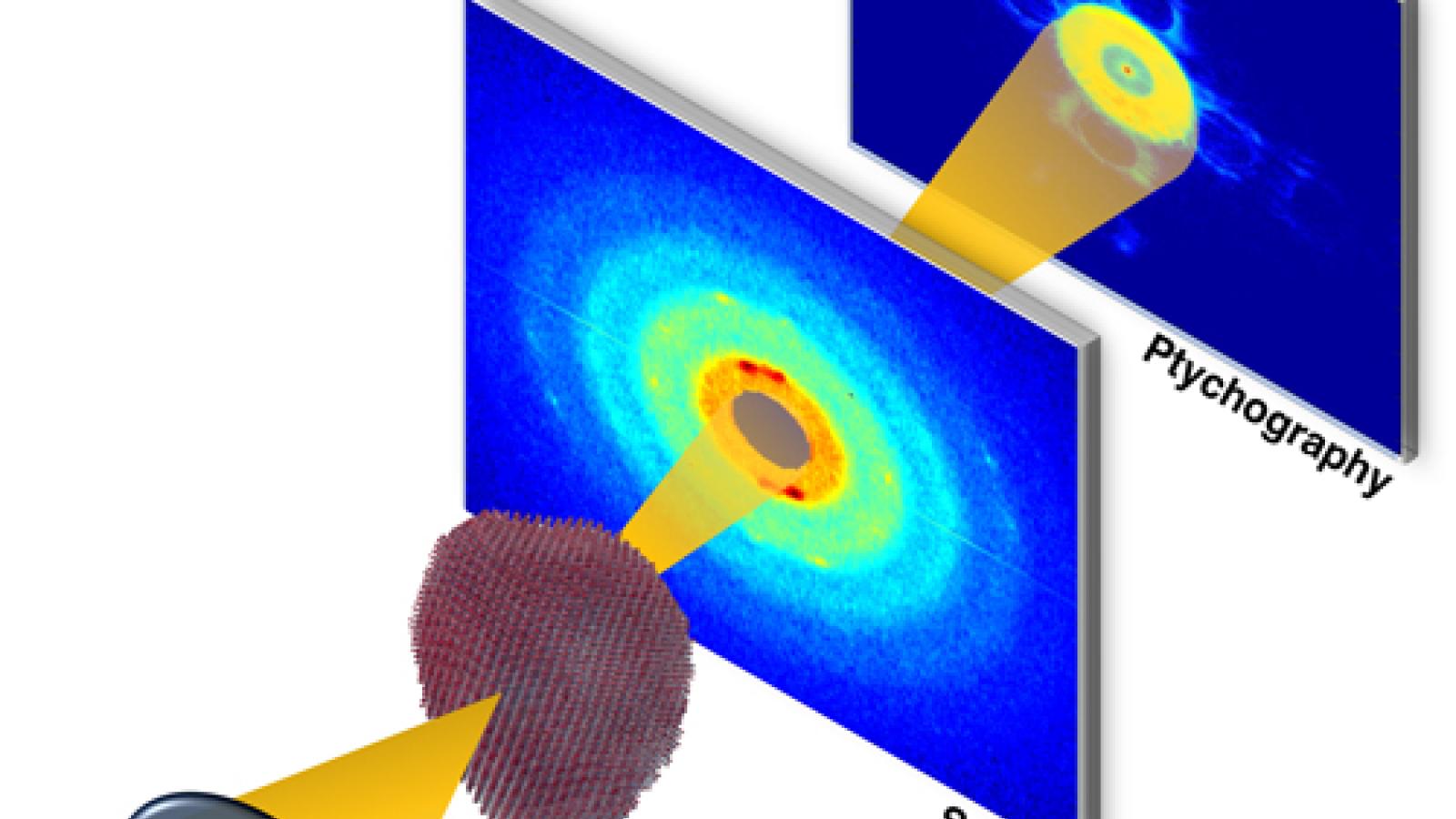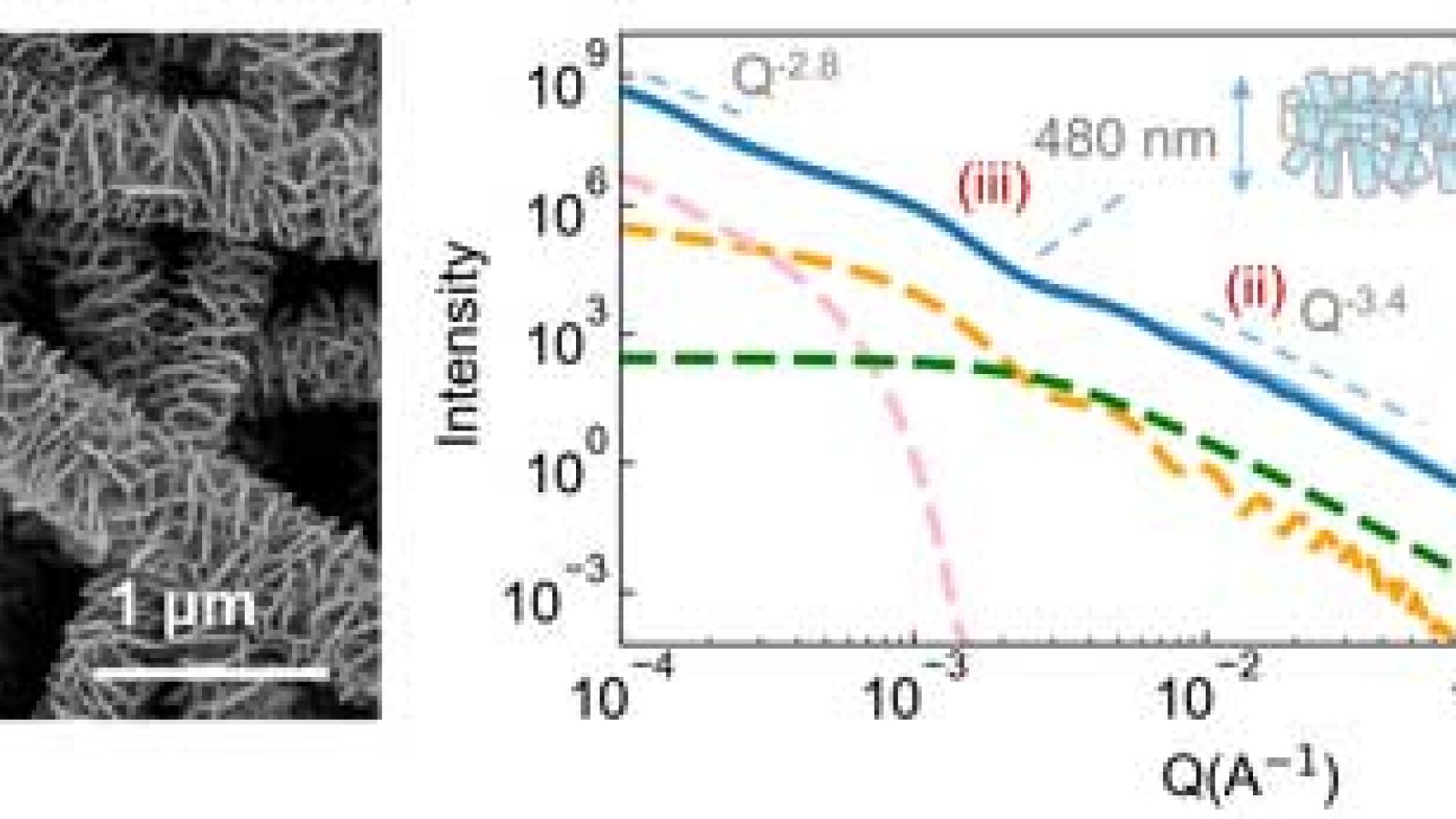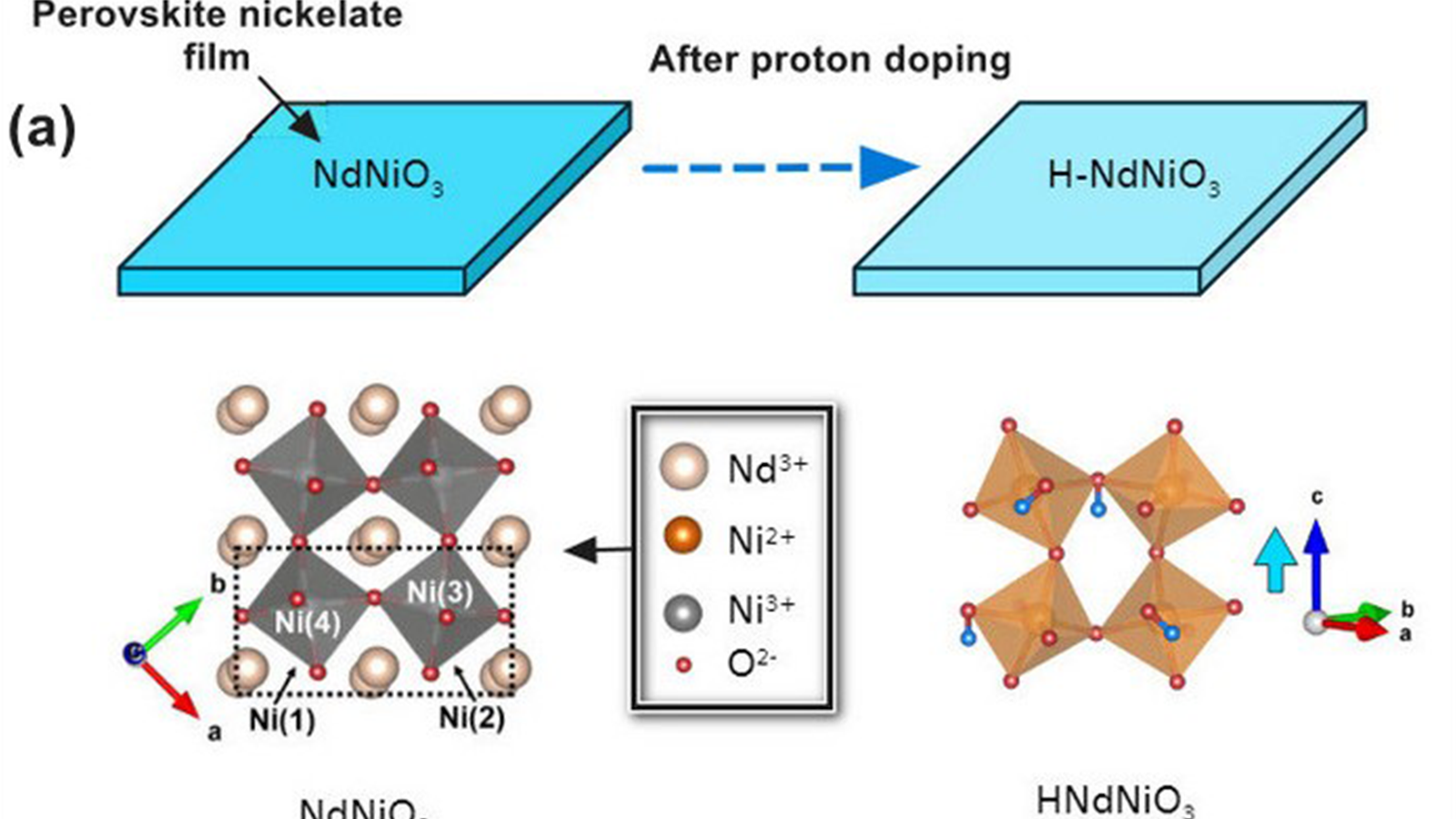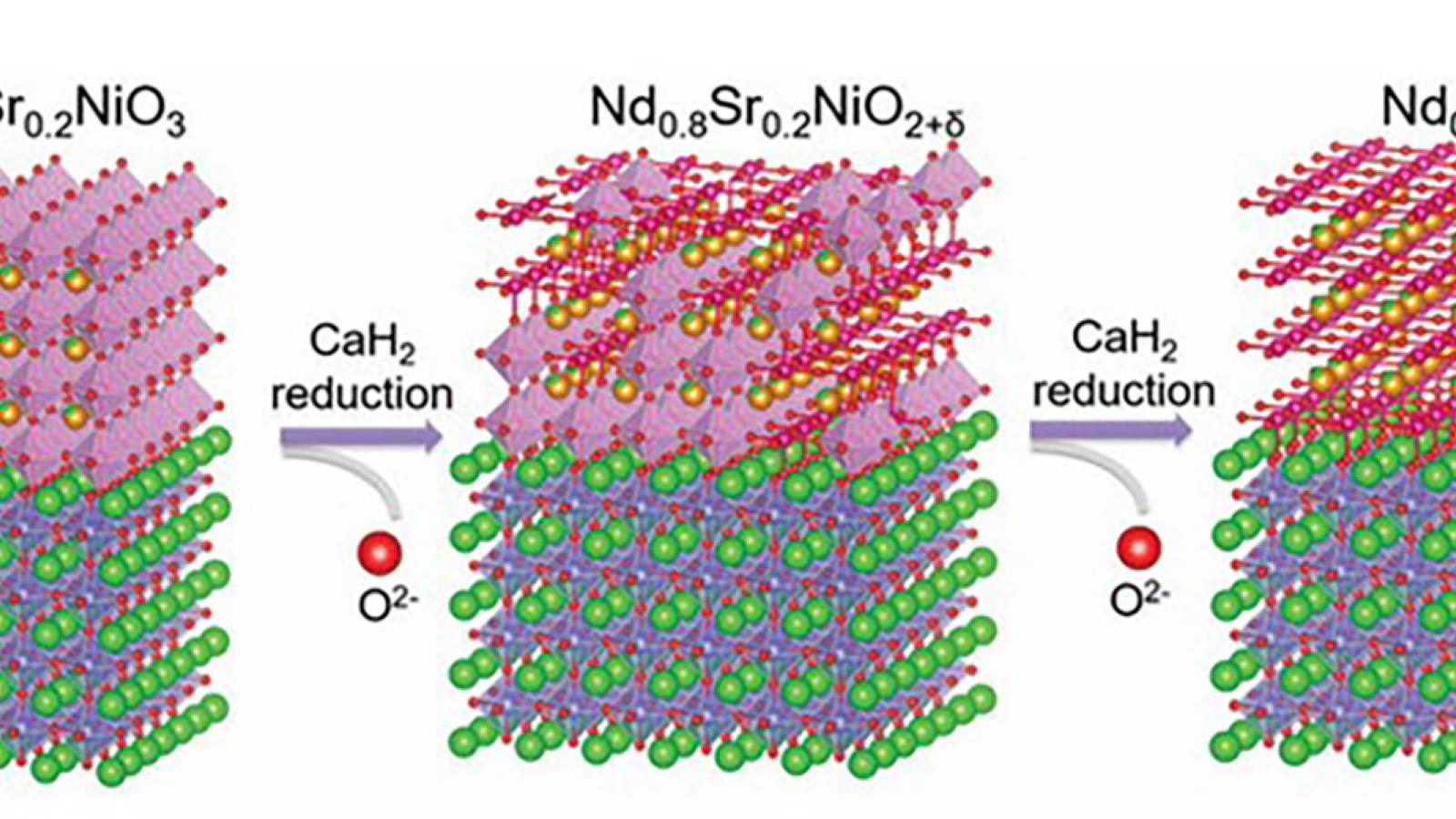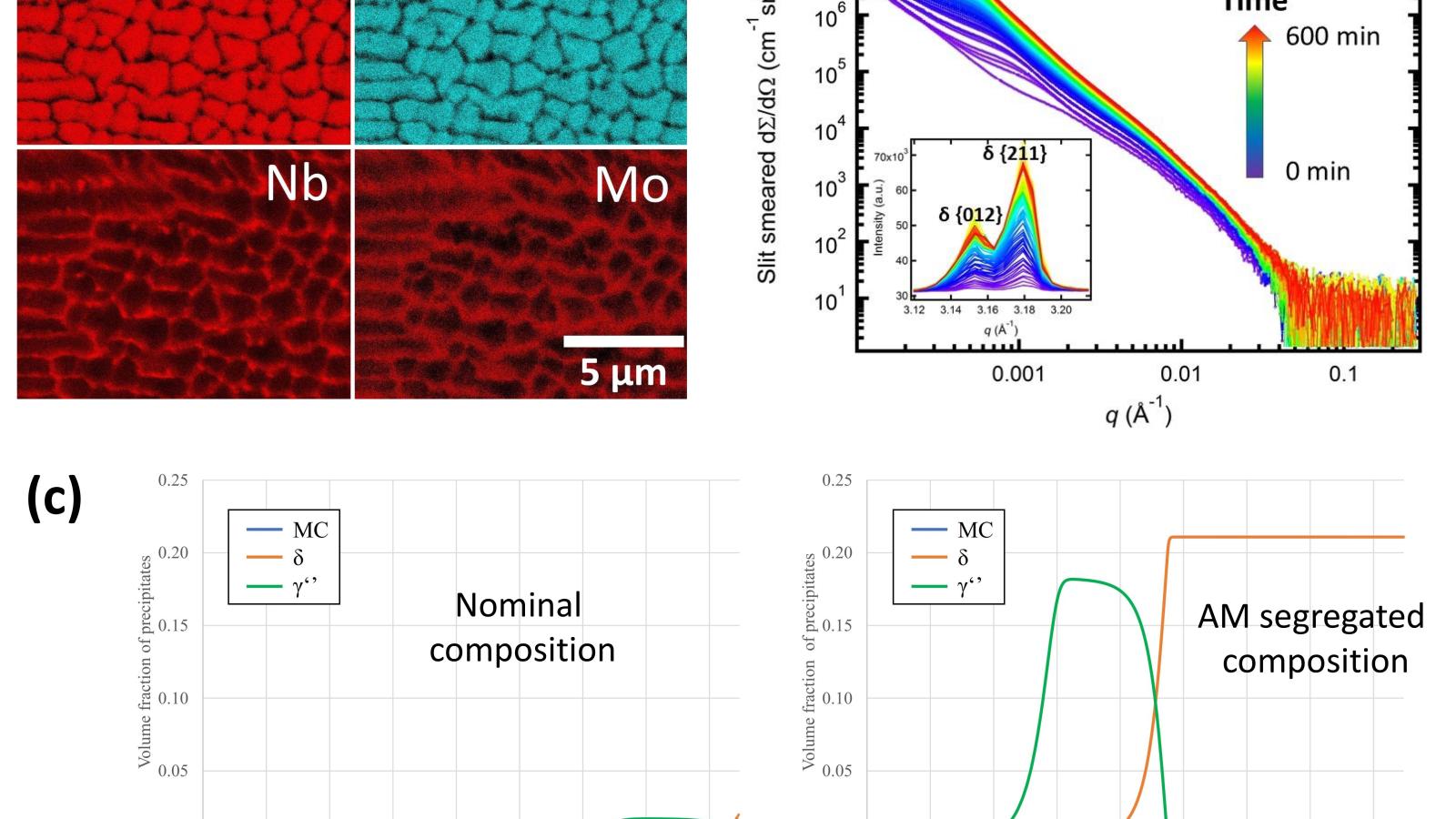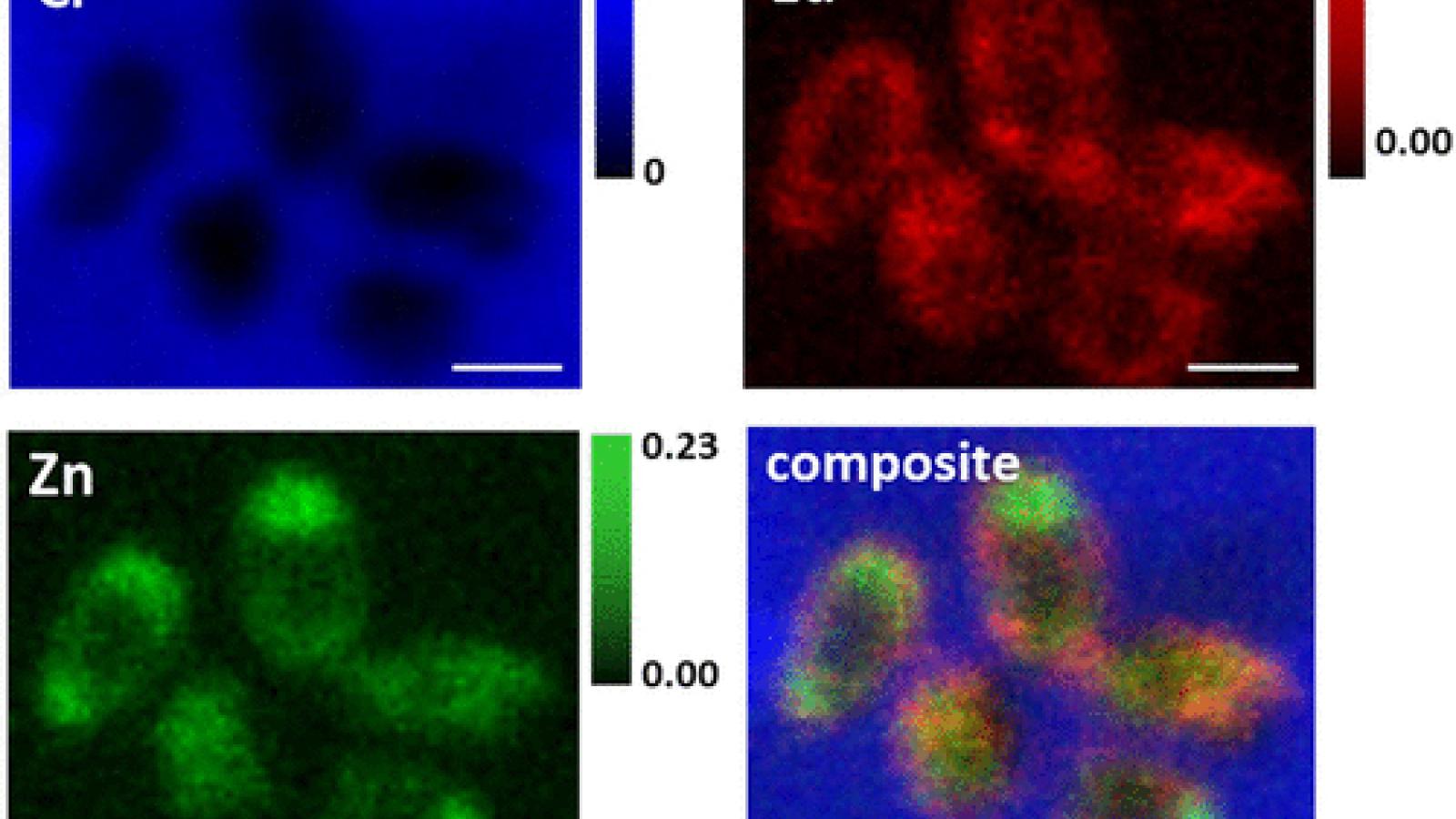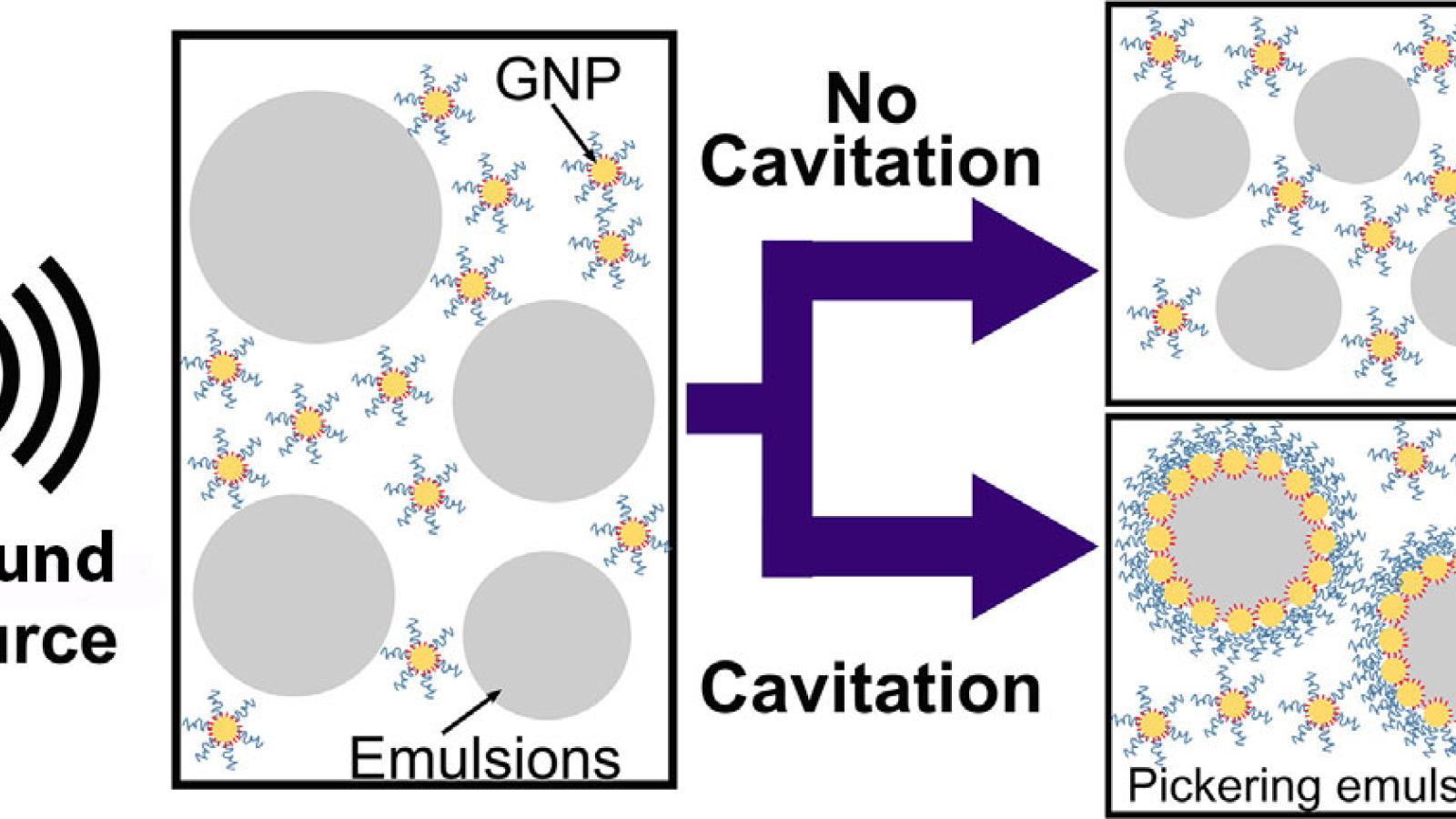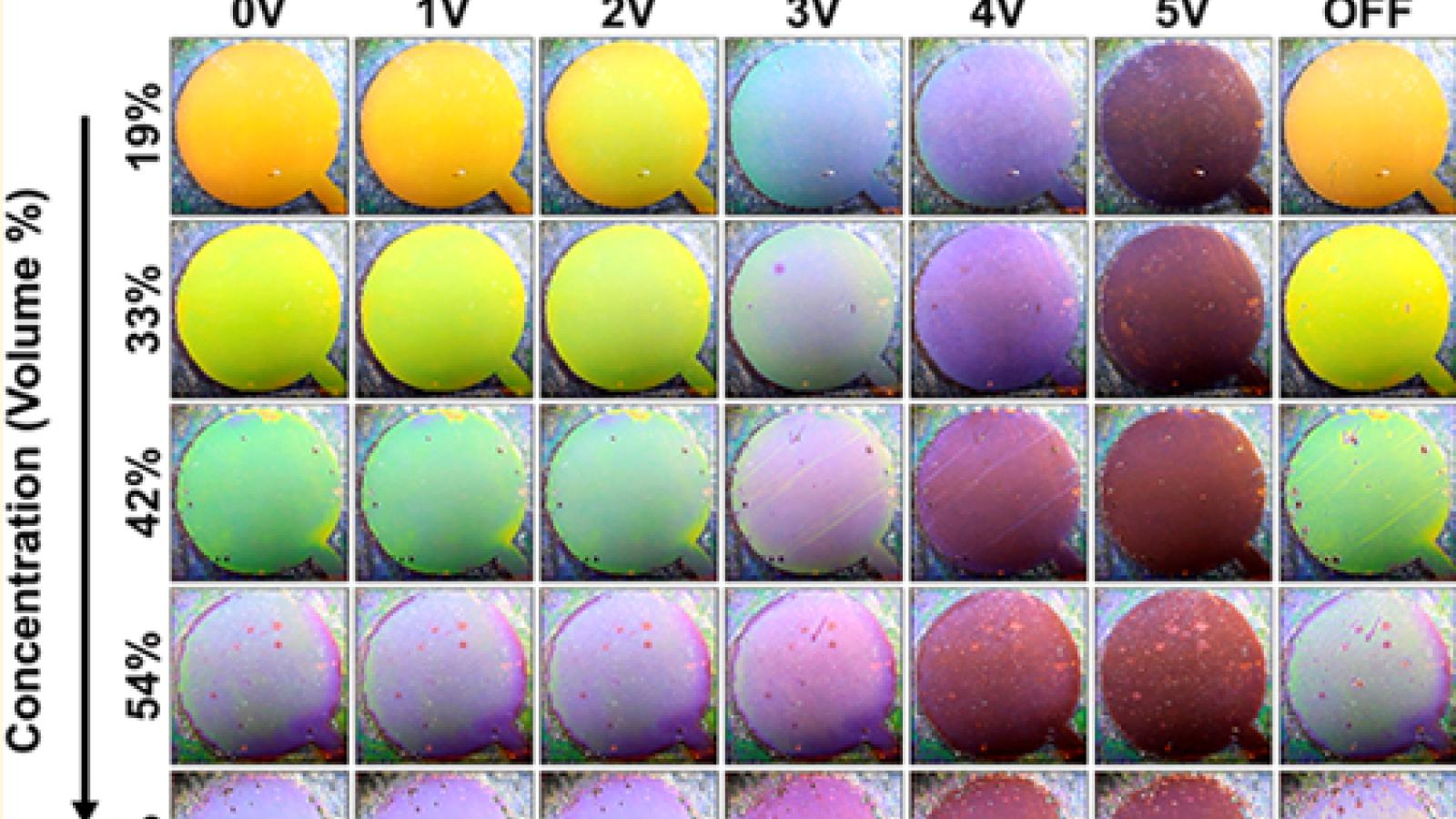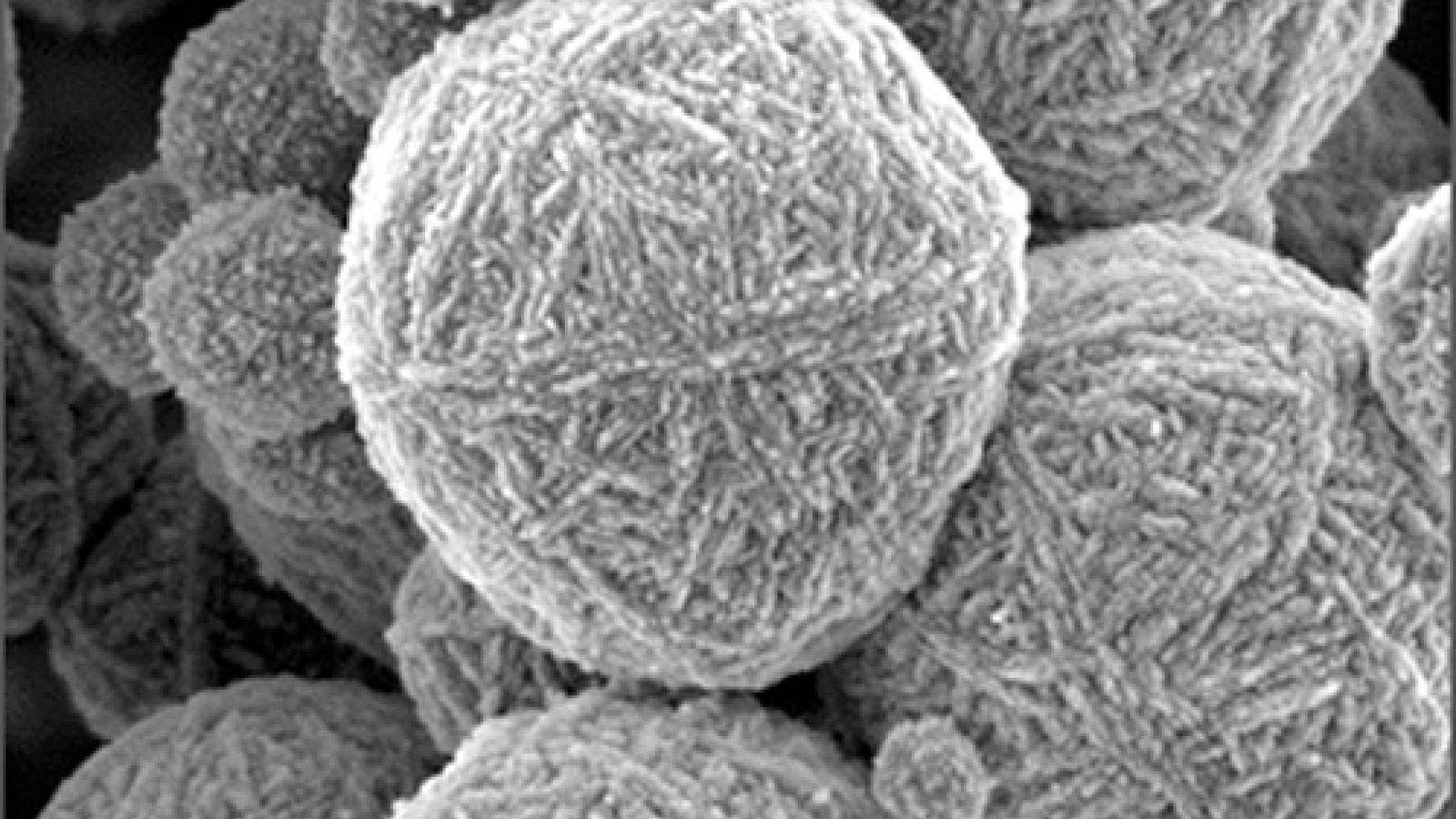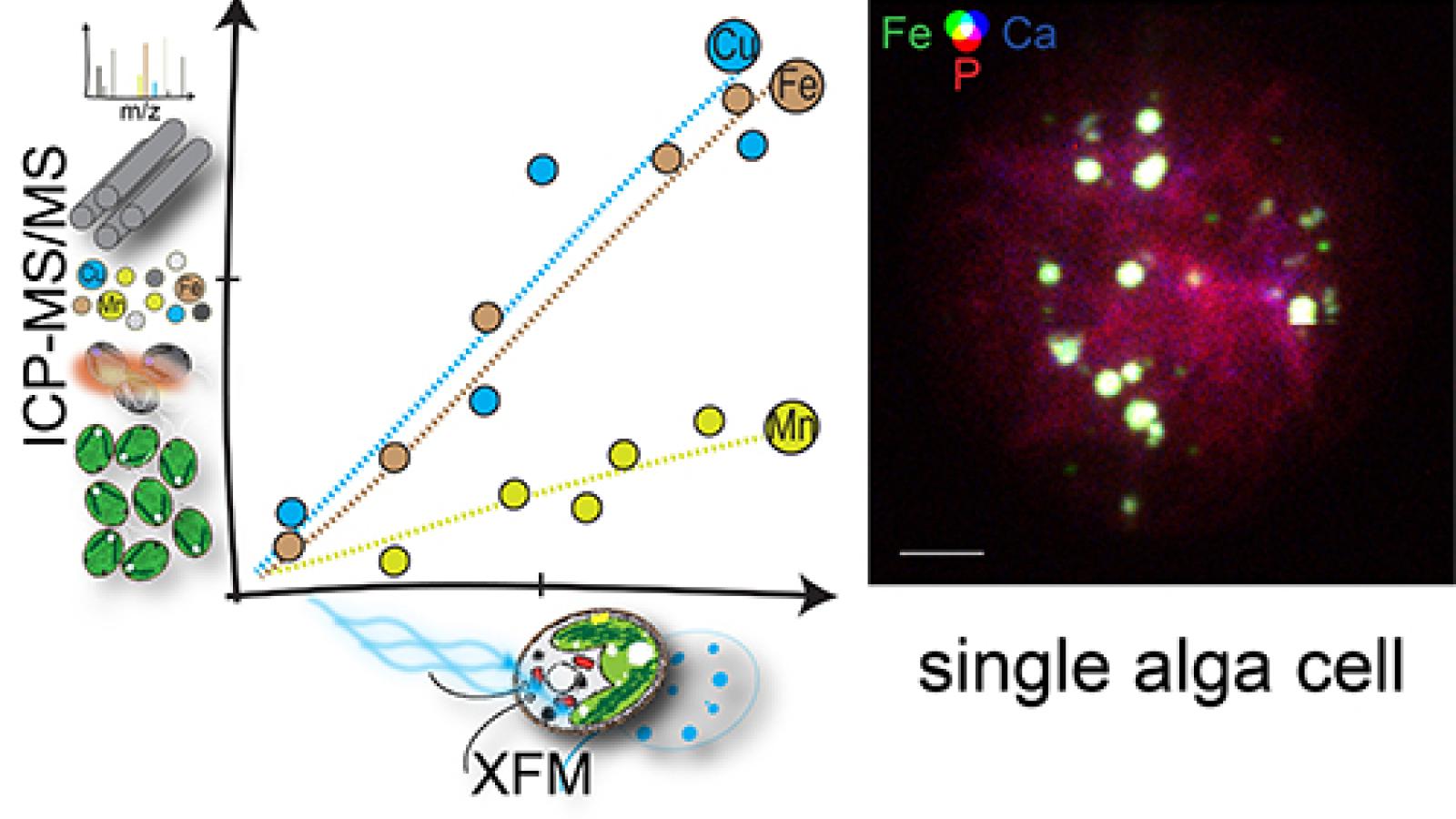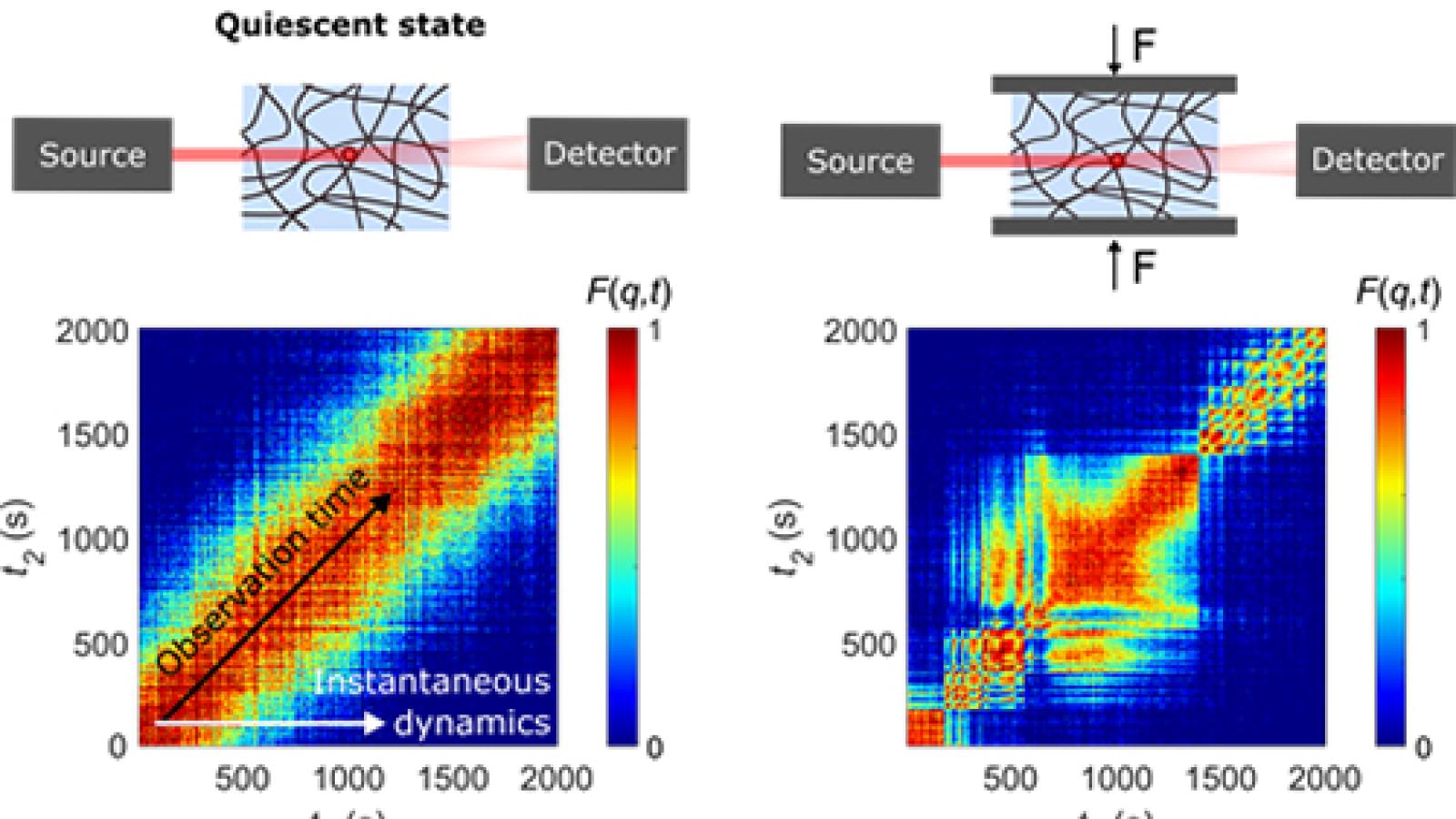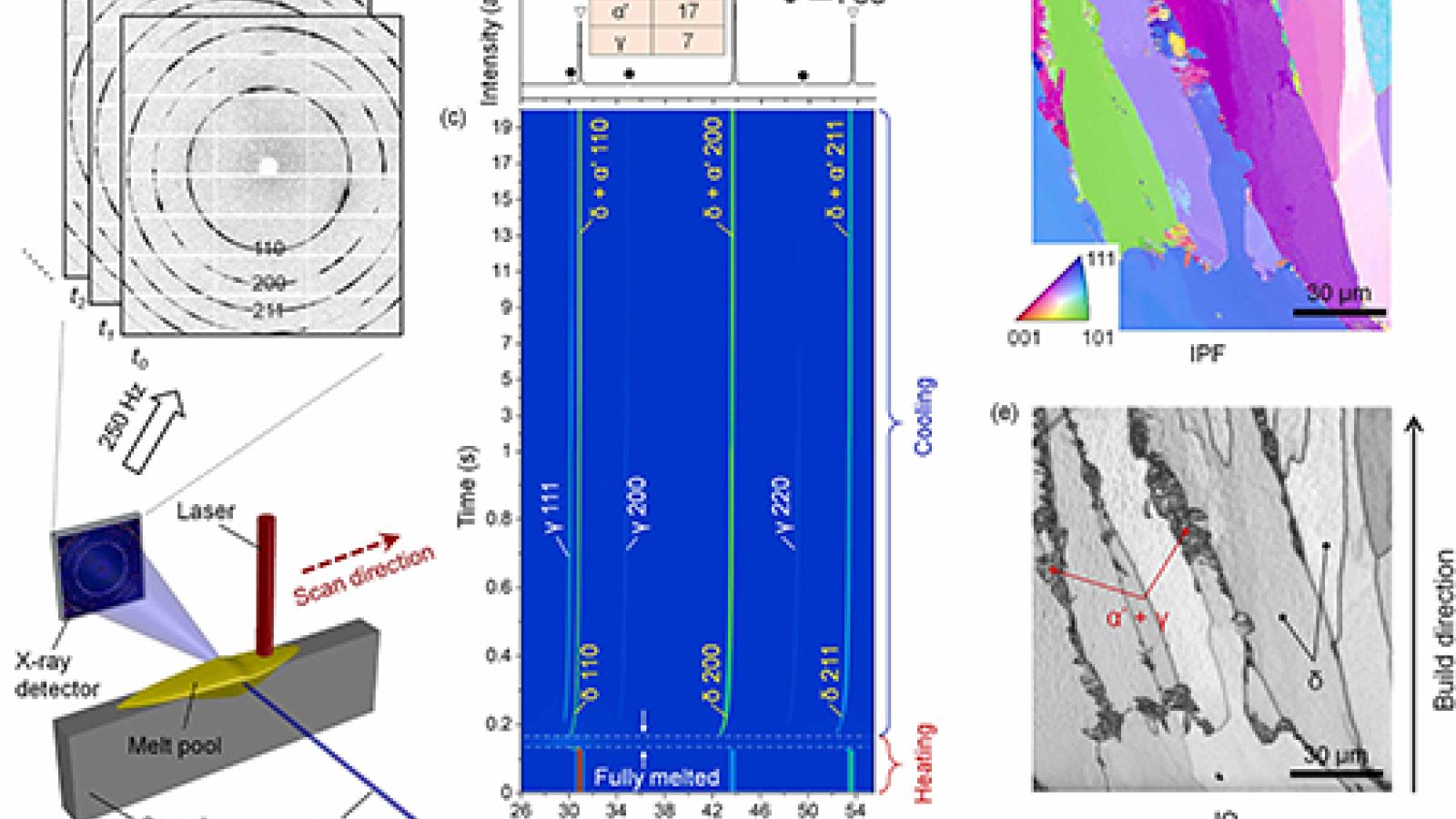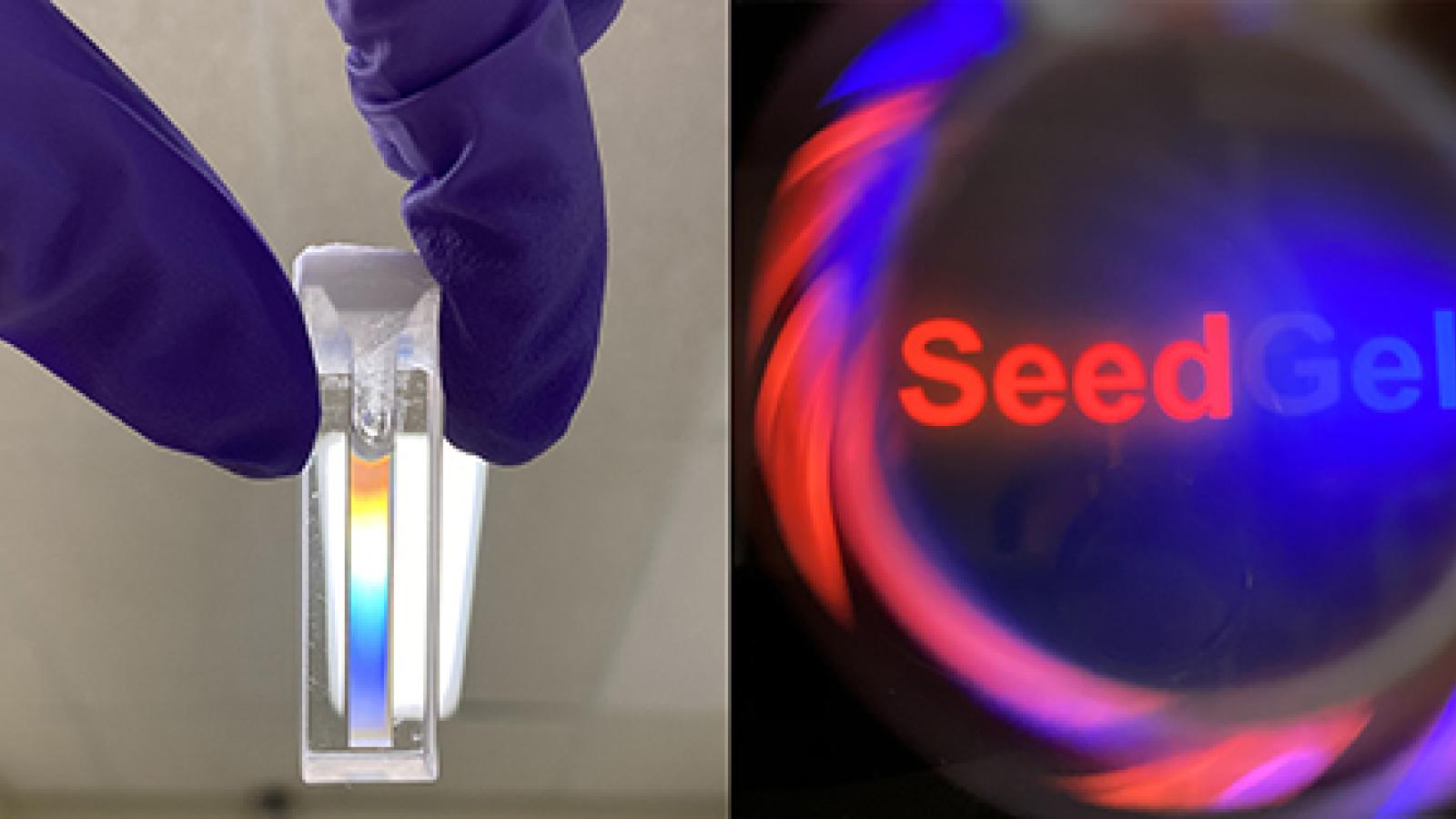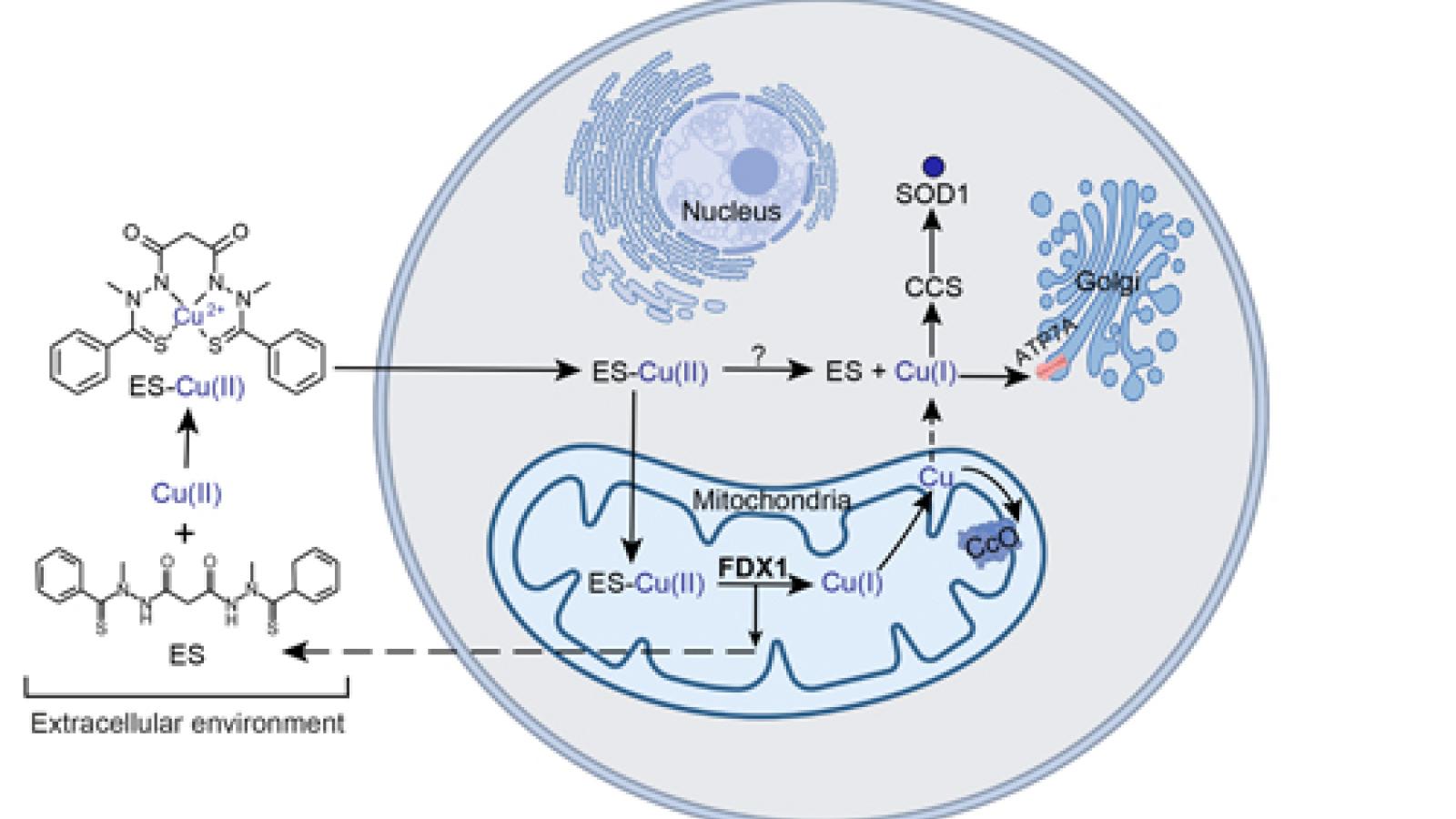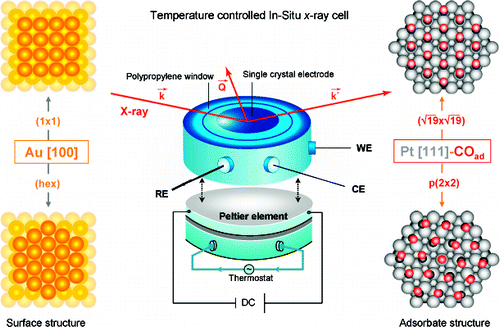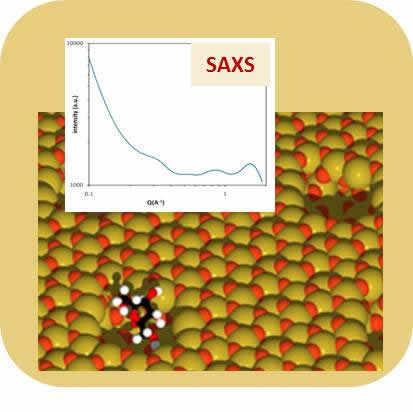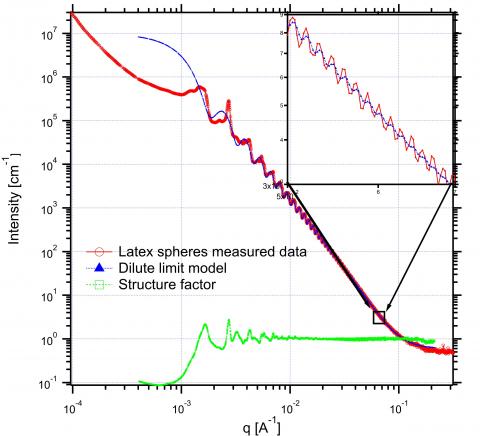01.23.2018
Methane in shale gas can be turned into hydrocarbon fuels using an innovative platinum and copper alloy catalyst, according to new research carried out in part at the U.S. Department of Energy’s Adv...
12-BM-B
03.10.2020
Improved catalytic converters for the next generation of ultra-low-emission vehicles could result from an innovative approach demonstrated in research at the U.S. Department of Energy’s APS....
12-BM-B
09.21.2020
Converting carbon dioxide and water into ethanol efficiently and cheaply could reduce the amount of CO2 that is released into the atmosphere. Researchers designed a novel catalyst to break down CO2 wi...
12-BM-B, 20-BM-B
01.13.2021
A stable, high-performance, dendrite-free aqueous battery using seawater as the electrolyte has been developed with an assist from research at the U.S. Department of Energy’s Advanced Photon Source....
12-BM-B
01.24.2022
Research Pushes the Auto Industry Closer to Clean Cars Powered by Direct Ethanol Fuel Cells: Alternative-energy research including studies at the U.S. Department of Energy’s Advanced Photon Source i...
5-BM-D, 12-BM-B
10.10.2022
A New Efficient, Abundant and Cost-Effective Catalyst for CO2 to CO Reduction: Reducing carbon dioxide (CO2) to carbon monoxide (CO) is useful for creating CO feedstocks and for lessening atmospheric...
12-BM-B
01.09.2023
Probing the Phase Dynamics of a Complex Oxide: Scientists using U.S. Department of Energy user facilities including the Advanced Photon Source have developed a technique that could be utilized for no...
8-ID-E, 12-BM-B
01.18.2023
Probing the Phase Dynamics of a Complex Oxide: Scientists using the U.S. Department of Energy’s Advanced Photon Source have shown how oxygen ions interact with a complex oxide, strontium cobalt oxi...
8-ID-E, 12-BM-B
01.24.2023
Increasing the Efficiency of Carbon Conversion: One method of combating climate change would be to capture carbon emissions at the source and convert them into some other material, preferably one wit...
12-BM-B, 20-BM-B
06.25.2024
Splitting water using renewable electricity to produce green hydrogen is seen by many as essential for achieving net-zero carbon emissions. A group of scientists has recently demonstrated a new type o...
12-BM-B, 17-BM-B, 20-BM-B
09.11.2017
Researchers utilizing intense x-ray beams from the U.S. Department of Energy’s Advanced Photon Source (APS) examined the flow of electricity through semiconductors and uncovered another reason these...
10-ID-B, 11-ID-D, 12-ID-B
06.26.2018
The engineering of materials into ordered structures is always a critical step to transfer and amplify microscopic molecular functionalities to macroscopic material properties. Tremendous efforts have...
12-ID-B, 12-ID-C,D
03.05.2019
Researchers using the U.S. Department of Energy’s Advanced Photon Source at Argonne National Laboratory made a surprising discovery about the complexity of the interactions between different compone...
12-ID-B, 12-ID-C,D
03.14.2019
Researchers from the University of Illinois at Urbana-Champaign, with colleagues from the Air Force Research Laboratory and Argonne National Laboratory, have designed and demonstrated a novel type of ...
12-ID-B, 12-ID-C,D
08.28.2019
Summary here...
12-ID-B
10.17.2019
Plastic materials that can be switched from their normal character as heat insulating materials to ones that can conduct heat well by simply turning the lights on could have a wide range of applicatio...
12-ID-B, 12-ID-C,D
12.09.2019
Scientists used the U.S. Department of Energy’s Advanced Photon Source to gain insight about potential special properties of Z phase matter and how other, more complex Frank Kasper phases of matter ...
12-ID-B, 12-ID-C,D
05.12.2020
Scientists using research techniques including x-ray studies at the U.S. Department of Energy’s APS have developed tiny sensors that measure oxygen transport in bovine lung tissue, establishing a ne...
12-ID-B
06.17.2020
A new study in part carried out at the U.S. Department of Energy’s Advanced Photon Source demonstrates how a modified 3-D printing process provides a versatile approach to producing multiple colors ...
12-ID-B
01.25.2021
How Tiny Compartments Could Have Preceded Cells: One of the most important questions in science is how life began on Earth. Results obtained by research at the U.S. Department of Energy’s Advanced ...
12-ID-B
02.02.2021
Scientists know that iron hydroxides can capture heavy metals and other toxic materials, and also can be natural semiconductors. While these properties suggest many applications, the full details of h...
12-ID-B
06.21.2021
UCLA and UIC Researchers Discover Foam “Fizzics”: Researchers using the APS answered longstanding questions about the underlying processes that determine the life cycle of liquid foams, which cou...
12-ID-B
07.20.2021
Giving RNA the Golden Touch by Adding to its Alphabet: Ribonucleic acid is a molecule that is essential in a variety of cellular processes so being able to study its structure and function is key to ...
12-ID-B
09.08.2021
A Crystal-Clear Way to Save Time: Researchers collaboratively used the U.S. Department of Energy’s Advanced Photon Source in their discovery of a better way to make a new class of soft materials—...
12-ID-B
02.14.2022
Nanostructures Get Complex with Electron Equivalents: Complex crystals that mimic metals—including a structure for which there is no natural equivalent—can be achieved with a new approach to guid...
5-ID-B,C,D, 12-ID-B
03.01.2018
Scientists using the U.S. Department of Energy’s Advanced Photon Source have developed a novel means of determining the absorption bandgap inhomogeneity of colloidal lead selenide (PbSe) quantum dot...
12-ID-C,D
08.22.2018
A team of researchers utilizing two U.S. Department of Energy synchrotron x-ray sources, including the Advanced Photon Source, have shown how to shuttle lithium ions back and forth into the crystal st...
12-ID-C,D, 20-ID-B,C, 33-ID-D,E
09.05.2018
Preparing the perfect nanoscale sandwich from oxygen-based ingredients was no picnic. But, with the assistance of the U.S. Department of Energy’s Advanced Photon Source, an international team of res...
12-ID-C,D
12.14.2018
A team of materials scientists carrying out research at the U,.S. Department of Energy’s Advanced Photon Source have, for the first time, visualized the three-dimensional atomic and electron density...
12-ID-C,D, 33-ID-D,E
03.14.2019
This research demonstrates a powerful new technique for characterizing atomic-scale surface processes and could eventually help scientists optimize crystal growth or develop new types of crystals for ...
12-ID-C,D
06.16.2020
The crystalline compound ruthenium dioxide is widely used in industrial processes for catalyzing a chemical reaction that splits molecules of water and releases oxygen, but the exact mechanism that ta...
12-ID-C,D
08.16.2021
Sniffing Out a Better Covalent Organic Framework: Research on covalent organic frameworks at the U.S. Department of Energy's Advanced Photon Source will open the way to effective manufacturing techni...
5-ID-B,C,D, 12-ID-C,D
11.29.2021
A Simple Switch in Lanthanide Separations: In this study, researchers used the U.S. Department of Energy’s Advanced Photon Source to investigate the correlation between extraction performance and t...
12-ID-C,D
02.29.2024
Three-dimensional carbon superstructures are useful in a wide variety of applications, including batteries, catalysis and gas storage. Now scientists have come up with an easy and inexpensive way to m...
12-ID-C,D, 20-ID-B,C
07.01.2024
Using a specially designed electrolyte, a team of researchers has showed that it’s possible to achieve long-cycling graphite anode lithium-ion batteries with an ether-based solvent. Their findings c...
12-ID-C,D, 17-BM-B
11.06.2024
Hydrogen doping, or hydrogenation, has been applied to many materials, including oxide compounds with complex crystalline structures. A research team recently demonstrated, for the first time, that tr...
12-ID-C,D
05.20.2025
A recently discovered superconducting compound is produced through a process called topotactic reduction, which transforms the relatively stable parent compound into a “high-temperature” supercond...
12-ID-C,D, 20-BM-B, 33-BM-C, 33-ID-D,E
06.06.2018
As the techniques of additive manufacturing (AM), more popularly known as “3-D printing,” become ever more versatile and applicable for diverse purposes, they sometimes pose unique challenges that...
9-ID-B,C, 11-BM-B
07.28.2020
In recent work carried out at two U.S. Department of Energy x-ray light sources, including the Advanced Photon Source, a novel tool was developed to obtain impressive spatial resolutions (e.g., 36 nan...
9-ID-B,C, 21-ID-D
09.08.2020
Homogenized milk, skin cream, and mayonnaise are just a few examples of Pickering emulsions. Researchers used the U.S. Department of Energy’s Advanced Photon Source to understand how sound waves ove...
9-ID-B,C
10.07.2020
Using a variety of research tools, including the U.S. Department of Energy’s (DOE's) Advanced Photon Source at Argonne, researchers at DOE's Lawrence Livermore National Lab are pursuing technology t...
9-ID-B,C
06.08.2021
Researchers using the U.S. Department of Energy’s Advanced Photon Source have developed a new method for determining the structure and behavior of a class of soft materials known as weak colloidal g...
9-ID-B,C
11.08.2021
Making the Most of Metal: The importance of metals in biology is made obvious by the elaborate mechanisms organisms use to regulate metal acquisition, storage, and usage. In a recent study at the U.S...
9-ID-B,C, 21-ID-D
07.25.2022
Relaxing with Soft Materials: A team of investigators used the U.S. Department of Energy’s Advanced Photon Source for their studies of the detailed microscopic dynamics of relaxation in a model sof...
8-ID-I, 9-ID-B,C
10.03.2022
How to 3D-Print One of the Strongest Stainless Steels: Many critical technologies contain a remarkably strong and corrosion-resistant alloy called 17-4 precipitation hardening stainless steel. Based ...
1-ID-B,C,E, 9-ID-B,C
10.17.2022
Tuning Color by Changing Temperature: Often, materials that transmit particular colors of light do so because of the periodic arrangement of their crystal structure. Researchers using the U.S. Departm...
9-ID-B,C
04.26.2023
Elesclomol, an experimental anticancer drug, could have potential to also treat copper-deficiency diseases, including Menkes disease. Although this copper-transporting compound has been shown to relie...
2-ID-D, 9-ID-B,C
08.23.2023
The characteristics of soil affect not just plants but the microbes that live in soil, like those that break down nitrogen. Changing the properties of soil will impact the soil's microbial population,...
9-ID-B,C


